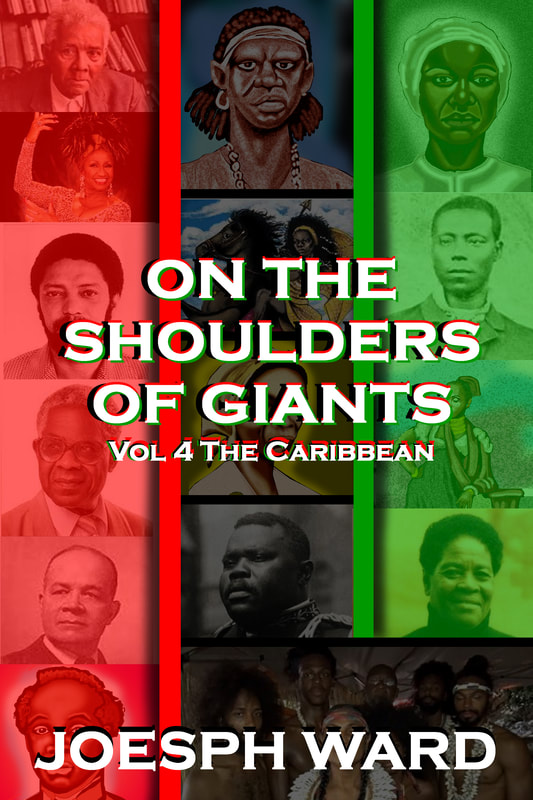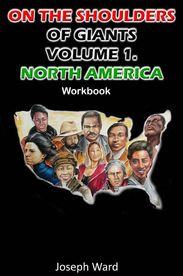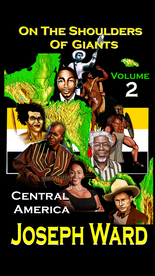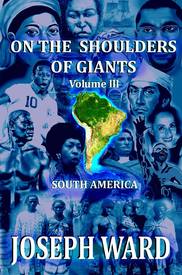|
On February 25th, 1894, William Leo Hansberry was born in Gloster, Mississippi, to parents Elden Hayes and Pauline Hansberry. His father Elden Hayes was a noted history professor at Alcorn A&M College, Mr. Hayes died when William was three years old leaving behind two sons and their mother. William Hansberry was the older brother of the famed civil rights activist and real estate broker Carl Augustus Hansberry, who is the father of author Loraine Hansberry. After the death of his father, William Hansberry acquired his father’s library of history books, which he studied daily, and started him on a path that would inspire generations of African people to learn their past. In 1915, Hansberry began his freshman year at Atlanta University equipped with the knowledge he gained from reading his father’s books about ancient Rome and Greece but was exposed to information about ancient civilizations on the continent of Africa, which piqued his interest and he had to learn more. His interest was further piqued after reading “The Negro” by W.E.B. Dubois, the book exposed Hansberry to other black historical authors and books on the history of Africa. Using the references included within “The Negro” he searched for the books listed but was disappointed when he learned Atlanta University didn’t have the resources to properly study ancient African civilizations. Inspired by “The Negro” he decided to transfer to Harvard University in 1917 to further his studies of Ancient Africa. Unfortunately, Atlanta University couldn’t meet his needs, but he was able to transfer to Harvard to take advantage of their resources, which he would use to empower African people. Hansberry graduated from Harvard with a bachelor’s degree in 1921, then moved to New Orleans, Louisiana to become a history professor at Straight College, before accepting a position at Howard University to become a history professor. It was at Howard University that Hansberry created his African societies curriculum, along with creating the African Civilizations Section of the Howard history department. Hansberry was holding true to his mission of gaining as much information about African civilizations so his people could be able to learn about their own history. Hansberry’s impact was beginning to be felt throughout America’s African American community. The African societies curriculum he created was no longer only being taught at Howard, other African American colleges were using his curriculum to educate their students about their history. Hansberry was able to travel to many colleges and universities giving lectures with pictures of Ancient African civilizations, inspiring faculty, and staff, which led to the institutions using his curriculum. 1925, began the decline of the relationship between Professor William Leo Hansberry and Howard University. That year, a symposium on “The Cultures and Civilizations of Negro Peoples in Africa” was sponsored by Howard, Hansberry, and his students presented 28 remarkable papers on evidence they gathered to prove the validity of the existence of ancient African civilizations. They were so impressive that they even provided actual archeological evidence of the existence of these civilizations. Hansberry and his students presented breakthrough evidence and information, but the administration at Howard University directly challenged the validity of Hansberry and his student’s findings. They were even challenged by the president of the university. The Howard administration was not happy with the information Hansberry and his team presented, they challenged the information on every level, the information was found to be credible, but Hansberry was still demoted and unable to gain his tenure. It’s amazing that a black man, at a black institution of higher learning, was punished for teaching black students about black history. Hansberry would go on to earn his master’s degree from Harvard University in 1932. Along the way to earning his master’s, he was able to study at Oxford University and the Chicago Oriental Institute; his reputation for being an expert on the history of African civilizations was spreading rapidly. Hansberry was traveling the globe lecturing about African civilizations and his reputation was growing so much that Howard promoted him to an associate professor position which gave him tenure. At this time, Hansberry was one of, if not, the world’s authority on ancient African civilizations, he was so knowledgeable that he was unable to earn a Ph.D. because no one at the university he attended had enough information to approve his dissertation. Hansberry was not only a world-recognized authority on the history of ancient African civilizations, but he was a mentor to many students who would become prominent figures throughout the world, Kwame Nkrumah and Nnamdi Azikiwe are his two most notable students. Nkrumah would become the first prime minister and president of Ghana, and Azikiwe would become the first president of Nigeria. Nkrumah, Azikiwe, and admirers all around understood the importance of Hansberry’s work and sought to help him in many ways publish and distribute his information. Hansberry was honored in 1963 as an academic center was named after him. He received the first Haile Selassie Prize, for his continuous work in revealing Ethiopian history, but his work was still being challenged by the administration at Howard University. A faculty or administration member accused Hansberry of teaching African history with no proof to validate his information, once again Hansberry had to defend his work, delaying his tenure, which he didn’t gain until 1938. 1959, was the year Hansberry retired from Howard University, leaving behind a strained relationship with the institution, but also blazing a historical path many historians behind him were able to travel. Hansberry died in 1965. Before his death, he prepared manuscripts for books but did not publish them. “Pillars in Ethiopian History” was published in 1974, and “Africa and Africans as Seen by Classical Writers” were published in 1977. Professor William Leo Hansberry, we proudly stand on your shoulders. J.A. Ward Click here to support the On the Shoulders of Giants book series!! References: https://www.encyclopedia.com/education/news-wires-white-papers-and-books/hansberry-william-leo-1894-1965 http://amsterdamnews.com/news/2018/aug/16/william-leo-hansberry-noted-authority-ethiopian-hi/ https://en.wikipedia.org/wiki/William_Leo_Hansberry https://www.blackpast.org/african-american-history/hansberry-william-leo-1894-1965/
0 Comments
7/18/2021 W.W. Law | The Man Who Preserved The African-American History Of Savannah, GeorgiaRead NowOn January 1, 1923, Westly Wallace Law was born in Savannah, Georgia to parents Westly Law and Geneva Wallace. W.W. Law was the eldest of three children and grew up in poor conditions on the West side of Savannah. Around the age of ten, his father died so he began working to help support his family. During this early phase of his life and even throughout his life, he was greatly influenced by his mother, his grandmother, Ralph Mark Gilbert, and John S. Delaware. The influence of John Delaware led him to become a member of the NAACP Youth Council as a high school student. During this time he participated in a desegregation protest at Savannah’s Grayson Stadium, and also participated in the hiring of a black disc jockey at a white-owned radio station. He attended Georgia State College, which is now Savannah State University, where he became the president of the NAACP Youth Council; while he was serving his community he and his mother were working where they could to pay for Law’s education. Law’s mother washed and ironed clothes for white families while Law worked at what was considered Savannah’s white YMCA. After his freshman year of college, he was drafted into the U.S. Army to serve as a soldier in World War II. He served three years in the Army which helped to pay for his education, meaning neither he nor his mother needed to work to pay for his education. Law earned his bachelor’s degree in biology, he then gained a job at the Savannah Postal Service, a job he would hold for over thirty years. In addition to working for the postal service, he served as the scoutmaster for Savannah’s Boy Scout Troop 49, taught Sunday School, and was still the president of the local NAACP chapter. W.W. Law, along with Reverend L. Scott Stell and a committee of others filed a segregation lawsuit against the Chatham County Schools; Chatham County is the county Savannah resides in. The lawsuit was filed before the U.S. district court, U.S. district judge Frank Scarlett oversaw the lawsuit, but Judge Scarlett and others held the case up so long that the group of students the lawsuit was filed to help graduated from high school. Law and his committee had to refile their lawsuit supporting a different group of students; the objective of the lawsuit was to desegregate the public schools in Savannah. Because of the persistence of the Law and his committee, the Fifth Circuit Court of Appeals ordered the desegregation of Savannah’s public schools. Law believed in non-violent resistance to oppression, he would hold weekly meetings at Bolton Street Baptist and St. Phillip A.M.E. churches to organize his non-violent movement. In 1960, an NAACP member was arrested for attempting to dine at the Azalea Room lunch counter. Law’s organizational and mobilizational skills were exceptional, he led a boycott against the restaurant, several protests, and wade-ins throughout Savannah and on Tybee Island. The protesters were relentless, launching protest after protest, which ultimately led to an eighteen-month boycott of Savannah’ Broughton Street. The boycott had a significant economic impact, the city of Savannah and the white merchants were forced to desegregate their businesses. During the late 1950s and early 1960s, while Law was leading non-violent boycotts and sit-ins, his contemporary Hosea Williams held a different ideology, Williams believed black people should be protecting themselves, he even created night watches to protect black neighborhoods, Law believed the night watches invited white racist to be violent against them. The relationship between Law and Williams became strained so much that Williams and his supporters left the NAACP and became members of the Southern Christian Leadership Conference. During the Mayor ship of Malcolm Maclean, Law and other NAACP members were able to win more desegregation battles, desegregating the library, restaurants, public parks, and other public places. The work of Law and the NAACP allowed black people in Savannah to have more access to the city and its resources. In 1961, Law was fired from his postal service job for his desegregation efforts, the NAACP, and even President John F. Kennedy supported Law and worked to help him regain his job after a decision was made by a three-person panel. Law retired from the Postal Service in 1976, his next mission was the preservation of the African-American history of Savannah. The Savannah-Yamacraw Branch of the Association for the Study of Afro-American Life and History was founded by W.W. Law to preserve Savannah’s black history. Under the leadership of Law, the association was also able to found the Ralph Mark Gilbert Civil Rights Museum, Negro Heritage Trail Tour, King-Tisdell Cottage Museum, and the Beach Institute of African American Culture. Because of Law, the African-American history of Savannah is preserved and accessible to people today. Because of his civil rights and historic preservation efforts, Law was honored by receiving the Governor's Award in the Humanities, an honorary doctorate degree from Savannah State University, the National Trust for Historic Preservation's National Preservation Award, and the Distinguished Georgian Award (1998) from the Center for the Study of Georgia History at Augusta State University. Law died in 2002, but his mark on Savannah is still visible to this day. I recently took a trip to Savannah, Georgia where I learned about W.W. Law and was able to literally see the sites and learn the black history of Savannah. I was a part of a Savannah Black Heritage Tour led by a gentleman who was mentored by W.W. Law, so Law’s legacy still lives on and will continue to live. To Mr. Westly Wallace Law, we proudly stand on your shoulders. J.A. Ward Click here to get the On the Shoulders of Giants book series!! References: https://www.georgiaencyclopedia.org/articles/history-archaeology/w-w-law-1923-2002 https://www.savannahga.gov/1909/W-W-Law-Collection On August 10, 1858, Anna Julia Haywood was born in Raleigh, North Carolina, to parents Hannah Stanley Haywood and George Washington Haywood. Hannah was an enslaved black woman and George was the man who enslaved her mother. George was the son of North Carolina’s longest-serving Treasurer and co-founder of the University of North Carolina, John Haywood. Like most black women of the times, Anna worked for the Haywood's as a servant until the age of nine when she received a scholarship to attend Raleigh’s Saint Augustine's Normal School and Collegiate Institute. The Episcopal Diocese of Raleigh founded the institute to train teachers to educate formerly enslaved black people. Anna spent fourteen years at the institute and distinguished herself as a premier student in the subjects of liberal arts, mathematics, science, English literature, and she even mastered Latin, Greek, and French languages. Though the institute was designed to educate formerly enslaved people, it reserved its upper-level classes for men, until Anna challenged the institute by proving her intellectual prowess and succeeding in being admitted into the class. One of the young men in the class was George A.C. Cooper, the two would marry but George died two years into the marriage. While completing her education at St. Augustine, Anna became a tutor for her fellow classmates. The money she earned from tutoring was used to pay for any expenses not covered by her scholarship. After graduating from St. Augustine, Anna became an instructor for the 1883 school year but taught through the 1886 school year, teaching subjects such as classics, English, vocal and instrumental music, and history. The academic route Anna was following was designed for male students, but she was determined to receive the best education available. Her next step in her academic journey was moving to Ohio to attend Oberlin College and was admitted as a sophomore because of how excellent her academic record was. She was well-rounded in her academic studies but studying music was one of the reasons she chose to attend Oberlin. She had a reputation for taking as many courses as she could because she had a thirst for knowledge, but she did not have the time or capacity to take all the classes she wanted. Anna graduated from Oberlin in 1884 and was classmates with other notable black women such as Mary Church Terrell and Ida Gibbs. Anna was a member of a literary society “LLS” who hosted events featuring orchestras, singers, and well-known lecturers. Between 1884 and 1885 Anna taught at Wilberforce College, 1885 was the year she returned to St. Augustine to teach before deciding to return to Oberlin as a graduate student earning her master’s degree in mathematics. Anna and Mary Church Terrell were the first two black women to earn a masters’ degree in 1888. In the year 1900, she attended the First Pan-African Conference in London, England to contribute her ideas to the upliftment of African people around the world. During her time in Europe, she visited many cities and landmarks. Let’s go back a few years to the year 1892, the year Anna moved to Washington D.C. Anna, along with Helen Appo Cook, Ida B. Wells, Charlotte Forten Grimké, Mary Jane Peterson, Mary Church Terrell, and Evelyn Shaw came together to form the Colored Women’s League, an organization created to promote unity and interest in the black community. Anna took a teaching job at the M Street High School, in 1901, she was eventually named the principal of M Street High School. Her time as the principal of M Street High School was cut short because of a difference in teaching philosophy with the school's governing body. She believed in the philosophy of W.E.B. Dubois while the school was structured by the philosophy of Booker T. Washington. She would later return to the school but it was Anna once again taking a stand for what she believed could help her people. 1892 was the year Anna published her first book A Voice from the South: By a Black Woman of the South. The book was well received and also led her to have public speaking opportunities where she spoke up for the rights of black people and women. Anna was a dynamic woman, after some time speaking publicly she decided to let her pen do the talking for her. In 1883, Anna produced the classic paper "The Intellectual Progress of the Colored Women of the United States since the Emancipation Proclamation" while in Chicago, Illinois attending the World's Congress of Representative Women. As one of five black women invited to the event to speak, she surely left her mark on the hearts and minds of the audience. Anna produced another remarkable paper in 1900 titled “The Negro Problem in America.” September 5th, 1902, she set the hearts of her people on fire when she delivered her speech "The Ethics of the Negro Question." 1914 was the year that Anna began pursuing her Doctor of Philosophy degree at Columbia University but tragedy struck her family. Her brother’s wife died and she adopted their five children which caused her to stop pursuing her Ph.D. temporarily. She faced many obstacles over a ten-year period in an attempt to earn her Ph.D., she also spent that time studying and preparing her dissertation and in 1930 retiring as an educator from Washington Colored High School. Her retirement didn’t last long, soon she became the president of Frelinghuysen University in Washington D.C. She worked at the school for ten years and left the school at the age of ninety-five. Thirty years prior to leaving Frelinghuysen, at the age of sixty-five, she became the fourth black woman in American history to earn a Doctor of Philosophy Degree. Her journey that started ten years earlier finally came to an end despite all the obstacles she faced. In 1964, at the age of one-hundred-five, Anna Cooper died leaving a great legacy in academics, literature, public speaking, civil rights, and women’s rights. Several of her works were published such as A Voice From the South, Le Pèlerinage de Charlemagne, Slavery and the French revolutionists, L'attitude de la France à l'égard de l'esclavage pendant la révolution, and The Voice of Anna Julia Cooper: Including A Voice From the South and Other Important Essays, Papers, and Letters. Her writing "The Early Years in Washington: Reminiscences of Life with the Grimkés," was also published. She was born in slavery but died a free woman. Free to educate and elevate herself and as many people as she could. Miss. Anna J Haywood Cooper, we proudly stand on your shoulders. J. A. Ward Click here to purchase the On the Shoulders of Giants book series. References: https://en.wikipedia.org/wiki/Anna_J._Cooper https://blackhistory.news.columbia.edu/people/anna-julia-cooper https://douglassday.org/cooper/ https://www.feministsforlife.org/anna-julia-cooper/ On January 20, 1876, Drusilla Dunjee was born in Harpers Ferry, West Virginia, to parents Rev. John William Dunjee and Lydia Ann Taylor Dunjee. Rev. Dunjee worked as a teacher and a preacher who was employed with a Normal School associated with the Baptist Missionary Association. He received a college education at Storer College in West Virginia. Drusilla was one of nine children her parents produced, and one of three who survived to grow into adults. As a young woman, Drusilla attended a preparatory school where she developed the skill of playing the classical piano and actually studied at the Northwestern Conservatory of Music in the state of Minnesota. Rev. John and Lydia Dunjee moved their family to Oklahoma City, Oklahoma in 1892, Rev. John was given a new position in Oklahoma by the Baptist Governing Board. 1892, is also the year Drusilla began teaching kindergarten until the year 1899, during this time, she was one of the first kindergarten teachers within her Oklahoma school district. Drusilla decided to pursue teaching as a career rather than the career of a musician. In 1898, she met and eloped with a man named Price Houston, the couple moved to McAlester, Oklahoma to start their life together. As a teacher in Oklahoma, Drusilla became dissatisfied with the quality of education young black boys, girls, and woman were receiving, so she opened the McAlester Seminary for Girls, a school she operated for twelve years before becoming the principal of the Oklahoma Baptist College for Girls in Sapulpa, Oklahoma, a position she held for six years. After serving as principal of the Oklahoma Baptist College for Girls, Drusilla and her family moved back to Oklahoma City where she founded her second educational institution, the Oklahoma Vocational Institute of Fine Arts and Crafts. 1934, was the year she began working for the Oklahoma Home for Delinquent Boys as their religious director before she would begin making significant contributions to American literature and African history. In 1926, Drusilla published her groundbreaking book Wonderful Ethiopians of the Ancient Cushite Empire, a book that is considered a classic and made her the first black woman to write a comprehensive multi-volume book covering the history of ancient Africa. The book was written over a twenty-five-year period as Drusilla conducted and compiled her research. During that time, she also contributed to her brother Roscoe’s newspaper the Black Dispatch, which was an important newspaper for black people. After publishing her book, Drusilla faced backlash from prominent black historians and public figures, but over time her works were confirmed to be accurate and pioneering work in revealing ancient African history, decades before a number of our well-known and beloved African scholars. As a journalist, she began her career in 1917 writing for her brother Roscoe’s then newspaper the Bookertee Searchlight before she wrote for his Black Dispatch newspaper. She also wrote for the Arizona Journal and Guide after moving to Arizona in 1935, where she continued to use her words to fight for the rights of her people as well as educate her people about their wonderful past. Because of health reasons, Drusilla moved to Arizona but she also began to receive praise for her groundbreaking work as a historian of African history, she also became a writer whose works were being syndicated through the Associated Negro Press, an organization she would become the director of for four years. Drusilla was both an advocate and activist for her people, she used her words to educate, motivate and empower, but she actively went into her communities to help found organizations like the Oklahoma YMCA, the Red Cross, the NAACP, and the Dogan Reading Room of Oklahoma. She was honored by the Association of Black Women Historians and Black Classic Press for her work as a historian and journalist. Historians account that she wrote six total volumes of Wonderful Ethiopians of the Ancient Cushite Empire but only volume two survived the years. She was also a poet and an important figure in the history of black people in America, because of her pioneering work to chronicle the history of Ancient Africa. She was the first black woman to write about the history of African people, and one of the first black people period to write about African history. She was fearless, driven, and loved her people so much she dedicated her life to educating her people, serving her people, and empowering them people through her gift of words. To Drusilla Dunjee Huston, we proudly stand on your shoulders. J.A. Ward Click here to support the On the Shoulders of Giants book series. References: https://www.uncrownedcommunitybuilders.com/person/drusilla-dunjee-houston-1 https://www.okhistory.org/publications/enc/entry.php?entry=HO038 https://en.wikipedia.org/wiki/Drusilla_Dunjee_Houston Muhammad Toure was born in the mid-1400s in Senegal and was said to be in the bloodline of the Soniki people within the Songhai Empire. Little is known about Toure’s life before he gained military fame, but he gained his fame through a number of legendary victories on the battlefield. There are scholarly debates over Muhammad Toure being a part of the ruling family of Songhai or not. What we do know is during the time of Toure’s rise to fame Sonni Ali Ber was the Emperor and Founder of the Songhai Empire. Toure served as the Chief Minister to Sonni Ali until Ali’s death in 1492. Ali was succeeded by his son Abu Bakr Da’u aka Sonni Baru. Sonni Baru would only rule Songhai for one year or less because of a coup d’état led by Muhammad Toure, which was followed by Toure naming himself the Emperor of Songhai. Muhammad Toure had plans to expand the Songhai Empire, but he first had to start by reorganizing his empire, equipping it to thrive during its expansion. Toure created new positions for his ruling counsel and appointed family members and the people he trusted the most to the positions. In a strategic move to solidify his empire, he married his daughters and nieces to the prominent men and officials of the kingdoms of the Songhai Empire. Songhai expanded so rapidly that it is known as the largest empire in the history of the continent of Africa, covering 1.4 million square kilometers. Toure wanted his empire to reflect two main things, being an Islamic empire and being an educated empire. Scholars say that other religious and spiritual paths were practiced in Songhai but Islam was declared the official religion. Timbuktu was one of Songhai’s universities and its reputation as one of the world’s leading educational centers grew under the rule of Muhammad Toure. Songhai not only housed one of the world’s leading academic centers, but they were also opening up trade agreements with Asian and European nations, which helped to increase their wealth and expand their empire even more. Toure’s rule of Songhai is known as the “Golden Age” of Muslim Scholarship at Timbuktu, scholars from around the world descended upon Timbuktu to learn. Toure’s rule was also a time when Islamic laws and ways of living began replacing the traditional African laws and ways of living. Toure is known as a well-organized leader, Timbuktu, Jenne, Masina, and Taghaza were the four areas Toure split Songhai into, each area was overseen by a governor who reported directly to Toure. In 1496, Toure took a pilgrimage to the Islamic holy city of Mecca carrying with him the equivalent of 2.5 billion dollars worth of gold, horseman, and infantrymen. Muhammad Toure became know as Askia The Great after a victory between the years 1493 and 1496. Stories are told that he took the title Askia to mock the daughters of the men he defeated because they declared that Muhammad Toure would never be great. The Askia Dynasty was one of the Songhai Empire’s greatest and most successful dynasties, but like all things, an end must come. As Toure grew older his influence on his people grew weaker. A number of the people grew bitter because of his strict Islamic views, but his greatest threat came from within his own household. A number of Toure’s trusted advisors were killed and his life was in danger. As an old man who was losing his sight and could no longer properly defend himself, he relied heavily on his advisors. His oldest son Musa was responsible for the killings of his advisors. Musa wanted Toure’s throne and nothing would stop him. Musa was eventually able to kill Muhammad Toure and take over as the Emperor of Songhai, but the memory of Muhammad Toure would even outlive the Songhai empire. To Muhammad Toure aka Askia The Great, we proudly stand on your shoulders. J.A. Ward Click here to support the On the Shoulders of Giants book series. References: https://www.britannica.com/biography/Muhammad-I-Askia https://www.encyclopedia.com/history/news-wires-white-papers-and-books/askia-muhammad-i https://www.blackpast.org/global-african-history/toure-muhammad-c-1442-1538/ https://www.panafricanalliance.com/askia-the-great/ Juan de Sessa was born around 1518, his place of birth is debated by historians, but it is believed that he was either born in Spain or Ethiopia. We do know he was born from enslaved Africans of the house of Don Luiz Fernandez, the Count of Cabra, the second Duke consort of Sessa. Juan was the personal assistant to the third Duke of Sessa, Don Gonzalo, the son of Don Luiz Fernandez. Juan and Don Gonzalo were said to have been around the same age range. In 1520, Don Luiz Fernandez died, forcing his wife Dona Elvira to move her family to Granada. At the age of twelve, Juan moved to Granada with Don Gonzalo and Dona Elvira, around this time Don Gonzalo began attending school, and because Juan was his personal assistant he accompanied Gonzalo as he attended school. Pedro de Mota was an instructor at the Cathedral of Granada who taught Don Gonzalo, because Juan was constantly in attendance and also paying attention, he also gained an education, becoming proficient in Greek and Latin languages. It is said that because he mastered the Latin language that his classmates named him Juan Latino and the name stuck. Under normal circumstances of the times, Juan would have only just accompanied Don Gonzalo and not have learned much because school was presented as unattainable for enslaved people, but because Juan was eager to learn he began picking up on the lessons and even outperforming Don Gonzalo. Juan was so proficient that he was allowed to continue to study because the instructors could see how much of an asset he was to the household. The University of Granada was founded in 1531, it is also the place where Juan and Don Gonzalo would continue their education after advancing past the Cathedral of Granada. Juan earned his Bachelor’s degree in 1546 and his Master’s degree in 1556, all while starting a family and navigating a world where slavery is still legal and racism is being defined. Juan was an educated man of African descent living in Spain less than fifty years after the Moors were expelled from Spain, and the European nations have begun building wealth from the Trans-Atlantic Slave Trade. To say Juan Latino was an exceptional person would be an understatement. Juan was known for his intellectual prowess and ability to teach others. He was hired to tutor Ana, the daughter of the Licenciado Carlobal, the owners of the estates of the Duke of Sessa. He was tutoring Ana in music; Ana had a reputation for her beauty and Juan had a reputation for being a lady’s man. After tutoring Ana, the two eventually married and the union was a disruption of the social classes of Spain. A man who is the son of a slave of the Duke of Sessa has married the daughter of the overseers of the Duke of Sessa. Ana and Juan produced 4 children from their union, two boys and two girls. Around 1566, Juan competed with Licenciado Villanueva for the position of Cathedral Professor of Grammar, he eventually earned the position and it was incentivized by giving him extra university privileges. Juan Latino was breaking barriers as an African in Spain in the 1500s. He was excelling as a Professor of Grammar and gaining a reputation as a great poet, he was even able to translate the poems of Virgil into Spanish. He was creating quite a reputation of excellence for himself, he was also beginning to be seen and respected within the social circles of Granada, but no amount of success could have shielded him from the presence of racism. Black skin was still seen as inferior to his fellow white counterparts, he was often targeted and ridiculed for his skin color and social class by birth. Juan is credited with contributing to the “Golden Age” of Spanish writing because a number of the writers who pushed Spanish literature into their “Golden Age” were students of Juan Latino. His influence and views of the world helped to prepare some of the most skilled and thought-provoking writers in Spanish history. Juan was very successful in his life, he gained a lot, but he also lost a lot as well. As he aged he began to lose a number of the people who were closest to him. A number of friends and colleagues passed away, but the loss of his dear wife Ana was a devastating blow to him. Juan Latino died in 1608 at the age of 90 due to his health failing and blindness setting in. Before his death, Juan was able to defy the odds of the times. He became a prominent member of his community, and his country, even though he was the son of an enslaved African within a society that saw African people as less than human. Mr. Juan de Sessa, aka, Juan Latino, we proudly stand on your shoulders. J.A. Ward Click here to support our On the Shoulders of Giants book series. References: https://as.nyu.edu/content/dam/nyu-as/asSilverDialogues/documents/M%20Gomez%20May%2020171.pdf https://peoplepill.com/people/juan-latino https://www.blackpast.org/global-african-history/latino-juan-c-1518-c-1594/ Wirth, N. (2007, December 09). Juan Latino (ca. 1518-ca. 1594). BlackPast.org. https://www.blackpast.org/global-african-history/latino-juan-c-1518-c-1594/ Learn more about Dr. Runoko Rashidi by visiting www.drrunoko.com PHONE: (323) 803-8663 EMAIL: Runoko@hotmail.com or drrunoko@gmail.com Support Dr. Runoko on Patreon https://www.patreon.com/RunokoRashidi... Cashapp: $RunokoRashidi In 1833, Marcos Maceo moved to the island of Cuba, after a number of his fellow soldiers were exiled from Venezuela. Marcos Maceo was a Venezuelan soldier fighting for the Spanish in the Venezuelan War of Independence. While living in Cuba Marcos met and married a woman named Mariana Grajales y Cuello, the couple produced a son named Antonio. Antonio Maceo Grajales was born on June 14th, 1845, in the town of San Luis, Cuba. His family lived on the Jobabo farm, which was Antonio’s place of birth. His parents were very instrumental in his upbringing. His father not only was a soldier, but he was also a successful farmer who owned several farms. His mother was an iconic Afro-Cuban woman who fought for women’s rights and Cuban independence. It is said that his father taught him how to be strong, crafty, and resourceful, but his mother taught him, discipline and critical thinking. Bring the eldest of nine siblings he needed to help his family bring in money. At the age of sixteen, he began working for his father as a delivery boy for his father’s farms. During his teens is when Antonio became interested in politics; he joined a Masonic Lodge in the year 1864. As a member of the lodge, Antonio was influenced by Cuban freedom fighters who were fighting against Spain to gain their independence. In 1868, Antonio married a woman named María Cabrales; 1868 is also the year he joined the Cuban Ten Years’ War along with his father and a few siblings. Mariana Grajales fully supported her sons and husband fighting against the Spanish for their independence. She is known as the “Mother of the Nation” because of how dedicated she was to the Cubans gaining their independence from Spain. The Ten Years’ War started after Cuban Revolutionary hero Carlos Manuel de Céspedes led a revolt known as “The Cry of Yara”. Céspedes freed the slaves he owned and they all joined together to fight Spain during “The Cry of Yara”. Antonio excelled as a soldier in the Cuban rebel army. Five months into his enlistment he was promoted to commander in the army, within the next few weeks he was promoted to lieutenant colonel, and then colonel shortly after. Antonio was a military star in the making; over his next five years and five hundred battles, he became very popular because of his success over the Spanish. He was promoted to Brigadier General then eventually Major General. Many feel that his promotion to Major General was delayed because of his skin color and his family not being of the bougie class of Cubans. Antonio gained a reputation for being almost invincible on the battlefield, he was known as the “Bronze Titan”, he suffered more than twenty-five injuries on the battlefield but never slowed down leading his men into battle. Antonio admired the military strategies of the Dominican Major General Máximo Gómez and even adopted the use of the machete over the Spanish sword. As the “Ten Years’ War” progressed it was also coming to an end and officially ended with the signing of the Pact of Zanjón, a document Antonio opposed any Cuban rebels signing. Antonio believed that the rebels needed tangible gains from the peace talks such as the abolition of slavery and Cuban independence, not just empty promises and moral victories. The Protest of Baraguá was Antonio and his men rejecting the limited and still oppressive terms of the proposed peace treaty. A comrade of Antonio planned to ambush the Spanish general who proposed the terms of the peace treaty, Antonio rejected the ambush because he wanted his victory to be with honor. Days after meeting with the Spanish general the battle resumed but it was paramount for Antonio to escape from his post in Cuba. He eventually found himself in New York planning a Cuban invasion with Major General Calixto García Íñiguez. The planned invasion became the second of three conflicts between Cuba and Spain known as the Little War. The Spanish did an effective job of promoting racist and divisive messages against the Cubans, which caused tension to arise between the white Cubans and Afro-Cubans. The Spanish were determined to kill Antonio while he was visiting Haiti, Jamaica, and Costa Rica. While in Costa Rica he was aided by the president and assigned to join a Costa Rican military unit as a consultant. Cuban poet and professor José Martí contacted Antonio to convince him to initiate a war thought of as the “Necessary War” or the War of 1895. Antonio was not confident in his army’s chances of victory until Marti was able to convince him that their chances of winning were higher than Antonio may have calculated. He was able to escape the capture of Spanish soldiers by going into the mountains, while in the mountains he was able to form a small group of soldiers that quickly became a small army. Antonio, Marti, and Gomez held a meeting in which Antonio and Marti disagreed on military strategy, days after the meeting Marti was killed in battle, Gomez was named the General in Chief of the Cuban Liberation Army, and Antonio became the Lieutenant General or second in command of the army. Behind the leadership of Gomez and Antonio, the Cuban liberation army traveled one-thousand miles in ninety-six days and earned numerous victories against the Spanish. Gomez organized the liberation army so well that they were overwhelming the Spanish army who had a greater number of soldiers and resources; the guerrilla warfare took a toll on the Spanish army. The cruel treatment of the Spanish towards the Cuban people encourage more able Cubans to join the Cuban Independence Army. A great number of Cubans were placed in concentration camps by the Spanish, which was the fuel needed to encourage more Cubans to fight against the Spanish. The Cuban Liberation Army was earning victories over the Spanish on both the East and West sides of the island. December 7th, 1896, Antonio and his personal escorts were moving in on Spanish territory and attempting to create an entrance for his army into Spanish territory when they were fired upon and Antonio was struck by two bullets that took his life. He was initially buried in a secret location but his remains were later moved to the Monumento El Cacahual in Havana, Cuba, and honored as a military hero. Antonio is remembered as one of Cuba’s greatest military heroes and fighters for the abolition of slavery and the independence of all Cubans, he even was aware enough to fight the underlying racism Afro-Cubans faced from white Cubans. He was the son of a military hero and Cuban independence icon, and he took the lessons from his parents to help lead his people closer to their true independence. To the legendary Antonio Maceo Grajales, we proudly stand on your shoulders. J.A. Ward Click here to support the On the Shoulders of Giants book series!! References: http://www.mcnbiografias.com/app-bio/do/show?key=maceo-grajales-antonio https://www.thoughtco.com/antonio-maceo-4688532 https://www.blackpast.org/global-african-history/grajales-antonio-maceo-1845-1896/ https://en.wikipedia.org/wiki/Antonio_Maceo_Grajales Click the link to join the OTSOG family and get a free copy of On the Shoulders of Giants Vol: 1 North America https://lp.constantcontactpages.com/s...
Support us on Patreon: https://www.patreon.com/OTSOG Cashapp: $joeward84 Follow us on Instagram and Twitter @ontheshoulders1 Visit www.ontheshoulders1.com to download our African history curriculum app Like us on Facebook: On the Shoulders of Giants Connect on LinkedIn: Joseph Ward Click the link to get your copies of On the Shoulders of Giants book series http://ontheshoulders1.com/store/ In the early 1800s, a young girl named Carlota was kidnaped from her Yoruba village in Nigeria and transported to Mantanzas, Cuba. While living in Cuba, she was sold to a sugarcane plantation in Triumvarato where the conditions were poor and inhumane. Carlota was strong-willed and vigilant, she refused to let her conditions break her. In 1843 Carlota met a fellow slave girl named Fermina who planned an uprising. Carlota was willing and able to help Fermina raid the plantation to gain their freedom. Unfortunately, the plantation owners learned of Fermina’s plans, she was beaten and locked in jail. Carlota was not deterred by Fermia’s incarceration; she used the talking drum to communicate to the others about her plans. The slaves would often use their drums as a safe way to communicate with each other. Using the drums Carlota organized a raid on the plantation which helped to free Fermina and others from jail. November 5th, 1843, is said to be the date the slaves led by Carlota launched their yearlong raid against the whites and plantation owners. The slaves used guerilla tactics to attack the whites which helped them to gain victories for a short while. Ultimately, Carlota and her comrades were captured and executed by the Spanish plantation owners. She would inspire future uprisings against slavery and oppression. Her ideas and passion did not die with her; they were continued by those who shared her vision. Even though Carlota was not successful in the end, she represents the spirit of freedom, the spirit of liberty. Humans were born to be free and she was not going to lie down and accept her conditions. She possessed brains, tact, skill, courage, leadership, and a love for her people. Ms. Carlota Lukumi, we proudly stand on your shoulders. J.A. Ward. Click here to support the On the Shoulders of Giants book series!! Carlota Lukumi: https://badassladiesofhistory.wordpress.com/2014/07/04/carlota-lukumi/ http://www.afrocubaweb.com/carlota.htm On February 29, 1892, Augusta Christine Fells was born in Green Cove Springs, Florida, to parents Edward Fells and Cronella Murphy. Augusta was the seventh of fourteen children and developed a love for art at an early age. Her father was a Methodist Preacher who believed sculpting was a sin because it was the creation of graven images. As a result of his beliefs, Augusta stated that she received a whopping four or five times a week. Augusta and her family moved to West Palm Beach, Florida where she attended a new high school. Her attending this new school was pivotal because the principal helped her to develop as an artist. As a senior in high school, the principal paid her a dollar a day to teach classes on molding clay. Augusta turned sixteen years old in 1907, this was also the year she married her first husband Mr. John T. Moore, and the couple produced a baby girl Irene Connie Moore. Unfortunately, years later Mr. Moore died which made Augusta a teenage widow. In 1915, Augusta married a carpenter named James Savage who she remained married to until their divorce in the early to mid-1920s. Augusta did not allow her personal issues to distract her from doing what she loved, which was sculpting masterful pieces of art from clay. Her continued sculpting led her to earn a display booth at the Palm Beach County Fair where her sculpture won a twenty-five dollar prize for the most original piece. Augusta eventually won her father’s support after she sculpted figures of the Virgin Mary and other religious figures. With new confidence, Augusta moved to Jacksonville, FL with hopes of sculpting busts of prominent black figures. She failed miserably and needed to create another plan of action for herself. Augusta began attending Florida Agricultura & Mechanical College for Negroes, which is now The Florida Agricultural & Mechanical University, a place where your dreams can come true if you take the right steps and believe. Augusta won first prize in a county fair in Tallahassee, FL for her sculptures, the commissioner of the county fair recommended her as a student who should study art in New York City at The Cooper Union, a private art college. Augusta thrived at Cooper Union, she thrived so much that she was awarded a scholarship just to pay her bills and live. At Cooper Union, Augusta had the privilege of studying under the well-known sculptor George Brewster, she also completed a four-year program in three years. Her name was starting to spread around New York City as a talented sculptor, it spread so much that Augusta was now sculpting busts for W.E.B. DuBois and the Honorable Marcus Garvey. 1923, was the year that Augusta married her third husband Mr. Robert L. Poston, a member of Marcus Garvey’s Universal Negro Improvement Association, unfortunately, Mr. Poston died of pneumonia aboard a ship in 1924. Later in 1924, Augusta applied for a scholarship to attend a special summer art program in France, she was very qualified and the committee wanted her to attend until they learn she was a black woman. After being denied because of her race, Augusta used the local newspapers to get the story out about her being discriminated against, but it didn’t sway the committee of the art camp to change their minds. Augusta would face more tragedy, her father became paralyzed, then her family’s house was destroyed by a hurricane, she was forced to move her family into her cramped New York apartment. Augusta’s luck seemed to start to change when she was offered a scholarship to attend the Royal Academy of Fine Arts in Rome, Italy, but was unable to raise enough funds to travel to Italy and live. In 1928, her sculpture Head of a Negro won the Otto Khan prize at the Harmon Foundation exhibition of 1928. Augusta understood her platform and understood that she needed to use her voice as well as her hands to speak up about injustices. She was very outspoken about the white artist and critics fetishizing black art through a “negro primitive” lens. She also believed that the white art world lacked respect and an honest view of black art. Between 1928 and 1930, a picture of Augusta’s sculpture Gamin made the cover of Opportunity Magazine, members of the Julius Rosenwald Fund saw the magazine cover then gave Augusta a scholarship of $1,800 to study in Paris, France. Augusta’s dream of studying with the greatest sculptures and artist in the world actually came true. While in Paris she worked and studied with Felix Benneteau; she would later write that the experience with Benneteau was no ideal and she eventually began teaching herself more about sculpting. Augusta went on to attend one of the leading art schools in Paris the Académie de la Grande Chaumière, where she excelled, winning multiple awards and traveling Europe displaying her art. In 1931, Augusta made her return to the U.S. during the Great Depression, which meant it was hard for her to find work as a sculptor. She began working as a teacher and was able to sculpt busts for Frederick Douglas, W.C. Handy, and James Weldon Johnson. She became the first black woman to be elected to the National Association of Women Painters and Sculptors. She then opened her own art studio in Harlem, NY, the Savage Art Studio, which was a place that helped to nurture future young black artists such as Gwendolyn Knight, Kenneth B. Clark, Norman Lewin, and Jacob Lawrence. The Savage Art Studio eventually became the Harlem Community Art center that served over one thousand and five-hundred people in the community. With a commission from the Board of Design of the New York World’s Fair, she sculpted a sixteen-foot sculpture titled “Lift Every Voice And Sing” also known as “The Harp”, which was inspired by the Negro National Anthem. Augusta opened two art galleries but was unable to sustain them, such a great artist was encountering tragic financial troubles. 1940 was the last time Augusta showed her art to the world. She later moved to upstate New York and worked as an art teacher for around 20 years before dying in New York City in 1962. Augusta Savage was gone but not forgotten. The Augusta Savage Institute of Visual Arts was created, as well as the Augusta Savage Cultural Arts Center. In 2009, author Alan Schroder wrote the book In Her Hands: The Story of Sculptor Augusta Savage. She was gifted with her hands, she was a powerful visionary, and tactical with her voice, all of which made a potent combination of a woman who endured much tragedy but always understood that it was up to her to create her world. To Ms. Augusta Savage, we proudly stand on your shoulders. J.A. Ward Click here to support the On the Shoulders of Giants book series. References: https://americanart.si.edu/artist/augusta-savage-4269 https://en.wikipedia.org/wiki/Augusta_Savage https://dos.myflorida.com/cultural/programs/florida-artists-hall-of-fame/augusta-savage/ Dr. Runoko Rashidi is an anthropologist and historian with a major focus on what he calls the Global African Presence–that is, Africans outside of Africa before and after enslavement. He is the author or editor of twenty-two books, the most recent of which are My Global Journeys in Search of the African Presence, Assata-Garvey and Me: A Global African Journey for Children in 2017, and The Black Image in Antiquity in 2019. His other works include Black Star: The African Presence in Early Europe, published by Books of Africa in London in November 2011, and African Star over Asia: The Black Presence in the East, published by Books of Africa in London in November 2012 and revised and reprinted in April 2013, Uncovering the African Past: The Ivan Van Sertima Papers, published by Books of Africa in 2015. His other works include the African Presence in Early Asia, co-edited by Dr. Ivan Van Sertima. Four of Runoko’s works have been published in French.
Learn more about Dr. Runoko Rashidi by visiting www.drrunoko.com PHONE: (323) 323-8663 EMAIL: Runoko@hotmail.com or drrunoko@gmail.com Support Dr. Runoko on Patreon https://www.patreon.com/RunokoRashidi... Cashapp: $RunokoRashidi On April 23, 1964, Adalberta Monica Rey Gutierrez was born in Comunidad Marca, Bolivia. She lived with her mother Florentina Gutiérrez Barra and her step-father Simeón Rey Barra, both Simeón and Florentina worked in agriculture to provide for their family. Monica was a great student who consistently excelled in her schooling. At the age of eleven, Monica and her family moved to the city of La Paz, Bolivia, where she began attending a boarding school named Hogar y Colegio Ave María. Monica’s intellectual prowess helped her graduate from Hogar y Colegio Ave Maria as the first Afro-Bolivian to earn a diploma from the school. After graduating from boarding school, Monica continued her education by attending the Higher University of San Andrés. She went on to graduate from the university in 1997 with a bachelor’s degree in social communications, her thesis titled Saya as Mode of Communication and Cultural Expression in the Afro-Bolivian Community, was groundbreaking in that it was the first time someone presented thorough and accurate research about the Afro-Bolivian people. The thesis focused on a musical and dancing aspect of Afro-Bolivian culture called Saya. Saya is important to Afro-Bolivian culture and Monica used her thesis to articulate its importance to non-Afro-Bolivians. In 1989, Monica became a leader within the Afro-Bolivian Saya Cultural Movement, which became an official organization that same year. The organization’s objective was to protect Afro-Bolivian people and culture while bringing Afro-Bolivian culture to the forefront and breaking the stereotypes. The Afro-Bolivian Saya Cultural Movement was able to apply enough pressure on the Bolivian government to change the way Afro-Bolivians were recognized. The terms Negrito, which means little black person, and Moreno, which means dark-colored people, were replaced with Afro-Bolivians. The people made sure they were recognized as both African and Bolivian. Afro-Bolivians had a victory but still more gains were needed. In 1994, Monica led a march for the recognition of Afro-Bolivian people on the grounds of the presidential palace because they needed their demands met. In 2001, Monica stepped down as the president of the Afro-Bolivian Saya Cultural Movement. In more groundbreaking work, Monica was able to work with an organization to conduct surveys on Afro-Bolivian people, studying them and acquire the needed information about the people for the first time. The Inter-American Development Bank founded the research project, which led to the report titled Diagnostic of the Situation of the Black Community in Bolivia, which for the first time reported an estimate of the size of the Afro-Bolivian population, which was around 20,000. Monica followed the diagnostic report with a collaboration with Fundación Simón y Patiño in 1998, with the production of the booklet The Main Drum, a booklet that displayed the history and culture of Afro-Bolivian people. She became the General Directorate of Archaeology and Anthropology for a year before taking a position as a professor at the Franz Tamayo Private University. She taught at Franz Tamayo Private University for five years before taking a position as a professor at the Higher University of San Andrés. From 1990 to 2009 Monica served as an ambassador for Afro-Bolivian people, and in 2009 she became the Director-General of the Fight Against Racism within the Vice-Ministry of Decolonization. In 2010, She became the advisor to the Office of the Ministry of Productive Development and Plural Economy. Because of the work Monica was doing, Afro-Bolivian people were allowed to participate in government for the first time in history. The National Council of Afro-Bolivians was formed and Monica served as the secretary. Afro-Bolivians were recognized as an individual ethnic group within the Bolivian census for the first time. Monica continued to achieve and is still achieving to this day. In 2014, she became the supranational deputy in the Chamber of Deputies of the administration of President Evo Morales, along with becoming the Director-General of Consumer Protection in the Ministry of Productive Development. In 2016, she introduced legislation to protect the human and civil rights of the Afro-Bolivian people. She dedicated her life’s work to helping her people and fighting racism. Afro-Bolivian people have more human rights and recognition because of the work of Monica Rey Gutierrez. To Adalberta Monica Rey Gutierrez, we proudly stand on your shoulders. J.A. Ward Click here to support the On the Shoulders of Giants book series. References: https://en.wikipedia.org/wiki/M%C3%B3nica_Rey_Guti%C3%A9rrezhttps://fierce.wearemitu.com/fierce-boss-ladies/bolivian-women-heroines-havent-heard-about-will-inspire-you/ https://oxfordaasc.com/view/10.1093/acref/9780195301731.001.0001/acref-9780195301731-e-74908 On April 17th, 1929, Marimba Ba was born in Dakar, Senegal, to parents who were educated and prosperous. Her mother died when she was a young girl, and her father became the Minister of Health for Senegal in 1956, he also worked as a civil servant before becoming the minister of health. Her grandfather was said to be a translator for the French during his time. After the death of her mother, Ba was raised by her father and maternal grandparents who made sure she received an adequate education. She was educated in the French traditions coupled with Quranic teachings; her grandparents made sure she learned Islamic values. Ba was an excellent student who at the age of fourteen earned the highest test scores for her age group. As Ba grew older, her thirst for knowledge and education was being challenged by traditional Islamic culture; her grandparents didn’t believe that a young woman should be educated because of their traditions, but Ba and her father held a different opinion about education. Ba’s father backed her decision to educate herself and helped her enroll in the Ecole Normale, or the Teacher Training College in the city of Rufisque, Senegal. She graduated from the training college in 1947 and became a teacher for twelve years. During her time as a teacher, Ba met and married a man named Obeye Diop. The couple produced nine children before divorcing and Ba becoming a single mother of nine children. Ba’s health started to decline during the latter years of her teaching, so she transitioned her career to become an educational inspector for the Senegalese Regional Inspectorate of Teaching. Ba was regarded as one of Senegal’s most exceptional and prized teachers despite her retiring early from teaching. She was later honored for her teaching in 1977 when a school was founded in her name by Senegal’s President Leopold Senghor. Marimba Ba was a single mother raising nine children and able to provide for her family in a society where the men are usually the primary provider for a family. This was also where Ba’s activism for women’s and human rights began. European neocolonialism was continuously spreading throughout Africa and was a threat to the African nations that were newly independent or developed nations. Ba was at the forefront of the fight against neocolonialism and women’s rights in Senegal. Her next move was publishing her first novel titled So Long A Letter in 1979, which became a critically acclaimed and Noma Award-winning novel. So Long A Letter was a novel that gave a history of the contributions of Senegalese women, it was also a peek into the life of Ba and other women in Senegal, and the challenges they faced to exist as women. She used her novels and community work to help fight discrimination against women, along with fighting the racist practices the French implemented in Senegal. In 1981, Marimba Ba died due to complications with cancer. Her second novel Scarlet Song was published in 1986, and similar to her first novel So Long A Letter, Scarlet Song was also a successful novel that focused on an interracial relationship in a traditional Senegalese society. Ba was just as adamant about restoring Senegalese culture before its French and Islamic influences, as she was about fighting discrimination against the women of Senegal. She was proud of her people and her culture. Ba’s third novel, La Fonction politique des littératures africaines écrites, was focused on encouraging African people to be proud of who they are, where they are from, and their own cultural practices. She was unsatisfied with the way the women were treated, and unsatisfied with the forced influences of the French through colonialism. Marimba Ba is the first woman in Senegal to publish a novel, and it was fitting that her writings challenged the oppressive traditions of Senegal against its women, and even against its men due to colonial influences. Ba experienced hardships and successes. She was supported by her father early in her journey, which helped her to be intentional and fearless in her pursuit of freedom and liberation for her people. Marimba Ba, we proudly stand on your shoulders. J.A. Ward Click here to support the On the Shoulders of Giants book series!!! References: https://en.wikipedia.org/wiki/Mariama_B%C3%A2 https://www.blackpast.org/global-african-history/ba-mariama-1929-1981/ https://www.sahistory.org.za/archive/biography-mariama-ba-lauren-daugherty https://www.historyheroblast.com/historyhero/mariama-ba On May 2, 1879, Nannie Helen Burroughs was born in Orange, Virginia, to parents John and Jennie Burroughs, who were formerly enslaved. Mr. John Burroughs worked as a farmer and was also a Baptist Preacher. Nannie was the eldest of the Burroughs’ children; when she was five years old her father died forcing her family to move to Washington D.C. to live with her aunt Cordelia Mercer. The Burroughs family has a history of gaining skills to create income for survival, Burroughs and her mother were able to bring those skills with them to Washington D.C. to make a living. The Burroughs family took full advantage of the plethora of opportunities available for them in Washington D.C. Nannie was a bright and gifted student who shined in her academic studies. Her academic prowess continued throughout her schooling, helping her graduate with honors from M Street High School in Washington D.C. As a high school student, Burroughs was active within her school’s activities. She was the organizer of the Harriet Beecher Stowe Literary Society at M Street High School. She was also able to study business and domestic sciences giving her a number of skills to make a decent living. Burroughs’ fire and determination led her to meet two women who were active within the women’s suffrage movement that inspired her, Anna J. Cooper and Mary Church Terrell. After graduating from high school in 1896, Burroughs sought a teaching job within the Washington D.C. school system; it is said that she didn’t get a teaching position because her skin was too dark. She was denied a teaching position by fellow blacks, but she didn’t allow that experience to stop her from teaching. In 1898, Burroughs moved to Louisville, Kentucky to work for the National Baptist Convention as an editorial secretary and bookkeeper for the Foreign Mission Board. Burroughs was one of the founding women of the Women’s Convention, which helped to serve the National Baptist Convention. She served with the Women’s Convention for forty-seven years and was the president for thirteen years. At the time, the National Baptist Convention was considered one of the largest African American organizations for black women. The National Baptist Convention received help from the National Association of Colored Women to serve black women in America, one of the outcomes of the partnership was the creation of the National Association of Wage Earners, an organization that was created to help black women earn better wages. Burroughs served as the president of the National Association of Wage Earners and Mary McLeod Bethune served as the Vice President of the organization. In addition to being a member of the National Association of Wage Earners and the National Baptist Convention, she served with the NAACP and around six other organizations. Burroughs began working with Herbert Hoover around 1928 to help with black home and land ownership, she also gave her famous speech "How White and Colored Women Can Cooperate in Building a Christian Civilization," in 1938, at the Virginia Women's Missionary Union at Richmond. As a response to her not being able to teach in Washington D.C. and the continued discrimination black women faced in America at the time, Burroughs decided to open her own school for women called the National Training School in 1908. The school started in a farmhouse and gave women who could only take classes in the evening a chance to earn an education. Because Burroughs was such a great teacher, the word spread quickly increasing the popularity of the school, which meant the enrollment drastically increased. Burroughs was using the school to help prepare black women to become the greatest versions of themselves, and in turn, help all of Black America become the greatest version of its self. The school was shaped by their three B motto: the bible, the bath, and the broom. In addition to the skills the women were learning, Burroughs made sure there was an emphasis on teaching black history, so she created her own black history course for her students. Burroughs was preparing the black women of the National Training School to combat the wage labor problems affecting black women, and negative images of black people by the white media. The women were prepared to combat racism, elevate themselves and their race, and do whatever work needed to be done to be able to strive despite being victimized by racism. Burroughs was a popular person because of her efforts to educate and equip black women to be self-sufficient and create a reasonable living, but she was seen as a villain by those who wanted black women to stay silent and only engage in domestic work. Her being rejected by the blacks within the Washington D.C. school system was a blessing in disguise. She was able to help many black women from poor backgrounds who would have been overlooked by the so-called black elite. Her grassroots efforts helped generations of black women find their callings outside of their homes. During the 1920s, Burroughs wrote and published two plays, The Slabtown District Convention and Where is My Wandering Boy Tonight? Nannie Hellen Burroughs died in 1961 of natural causes, leaving behind a legacy of service and commitment to her people. The National Training School was renamed the Nannie Hellen Burroughs School in 1964. During and after her life she was honored by receiving an honorary Master of Arts degree from Eckstein Norton University in 1907, May 10th of 1975 Nannie Helen Burroughs Day was declared in Washington D.C., and Nannie Helen Burroughs Avenue was named after her. To the incredible Ms. Nannie Helen Burroughs, we proudly stand on your shoulders. J.A. Ward Click here to support the On the Shoulders of Giants book series!! References: https://www.nps.gov/people/nannie-helen-burroughs.htm https://en.wikipedia.org/wiki/Nannie_Helen_Burroughs https://kinginstitute.stanford.edu/encyclopedia/burroughs-nannie-helen https://www.blackpast.org/african-american-history/burroughs-nannie-helen-1883-1961/ On January 9th, 1945, Altheia Jones-LeCointe was born to parents Viola and Dunstan Jones in Port of Spain, Trinidad. Altheia was described as vibrant and exceptional as a young girl because she was intellectually gifted. Her college career started in the city of Barataria, where she attended St George’s College, and after earning her bachelor’s and master’s degrees she attended the University College London and earned her Ph.D. in biochemistry in 1965. As a college student political activism became a part of Altheia’s life. After earning her Ph.D. she became a teacher and a member of the Universal Coloured People’s Association (UCPA), an organization where she was one of the main organizers helping to fight against racism against African and Asian people. In 1968, the Universal Coloured People’s Association was led by a Nigerian novelist, playwright, and political activist, Obi Egbuna, but he was arrested and imprisoned because of his political activism with the UCPA and the British Black Panthers. Altheia soon assumed leadership roles within the UCPA and the British Black Panthers. Her leadership helped to revive both organizations and the energy behind the political movements. As a visible leader of the Black British movements against racism and oppression of African and Asian people, Altheia was able to increase the memberships of both the UCPA and the British Black Panthers through recruitment, as well as, building relationships with fellow anti-racism activists in London. Darcus Howe and Altheia’s husband Eddie LeCointe were two of the most notable names recruited to join the British Black Panthers. Altheia’s reputation as an incredible talent with intellectual gifts followed her even as an activist; she successfully used her intelligence to debate for the Black Panther Youth League, and she also taught classes to the youth about anti-colonialism. She was a fearless person and a talented public speaker. Her impact helped to make black women in London fighting against racism more visible. Altheia also made sure black women were not overlooked, suppressed, or victims of sexual abuse as a leader of the British Black Panthers; it is said that anyone who harbored sexist views did not last long within the organization. Under the leadership of Altheia Jones-LeCointe, the British Black Panthers’ membership increased by more than three thousand people, they created the Freedom News newspaper and created community programs similar to the Black Panthers in the United State. Altheia was never officially declared the de-facto leader of the British Black Panthers, but her leadership skills prevailed and helped the organization thrive. The Mangrove Restaurant was very popular within London’s black population, it was owned by a man named Frank Crichlow, and became the main meeting place of black political activists. It also became targeted by the London police because they wanted black people to stay in their place and just accept racism as the norm. After being harassed by the police Altheia and other activists organized a protest against the constant police raids of the Mangrove in 1970. There were over one-hundred and fifty protestors being opposed by more than 200 police officers. The protest became violent due to the police antagonizing the protestors, which led to Altheia and eight other figures being arrested. The Mangrove Nine was the name of Altheia and her eight other comrades who were arrested protesting police harassment. Darcus Howe and Altheia Jones-LeCointe were the only two of the Mangrove Nine to represent themselves in court, they were determined to stand up for themselves and expose the police as a group of thugs who only harassed black people. After a long and arduous trial, the Mangrove Nine all walked free from being convicted of any crimes; the police were exposed for targeting the Mangrove Nine because of their race. At the time, the trial of the Mangrove Nine was the longest trial in British history, and an important trial exposing the racist history of the British against black resistance. The events of the Mangrove Nine are depicted in documentaries and television series’ such as The Mangrove Nine, Sky Atlantic, Small Axe, and How the Mangrove Nine Won. Altheia Jones- LeCointe’s story is not a widely told story, in fact, in the television series Sky Atlantic, Altheia was not depicted at all. She was a black-Caribbean woman who was proud of who she was and where she was from, she was also a leader, warrior, and nurturer for her people. She directly challenged the London police and their constant harassment of her and her people and came out victorious. To Dr. Altheia Jones-LeCointe, we proudly stand on your shoulders. J.A. Ward Click here to learn more about the On the Shoulders of Giants book series. References: https://www.stylist.co.uk/visible-women/altheia-jones-lecointe-black-british-civil-rights-activists-panther-mangrove-nine-notting-hill/232959 https://en.wikipedia.org/wiki/Altheia_Jones-LeCointe https://www.connectradio.fm/2020/11/20/small-axe-letitia-wright-shares-the-beautiful-connection-she-had-with-mangrove-activist-altheia-jones-lecointe/ https://www.blackpast.org/global-african-history/british-black-panther-party-1968-1973/ https://en.wikipedia.org/wiki/Mangrove_Nine On March 23, 1942, Walter Anthony Rodney was born to parents Edward and Pauline Rodney in Georgetown, Guyana. Rodney’s family was considered working class, but he was still able to excel in his academics as a young boy. During high school he continued to excel which led him to graduate at the top of his Queen’s College class of 1960; Queen’s College was the top male high school in Guyana. Because of his academic excellence, he earned a scholarship to attend the University of the West Indies at Mona, Jamaica. In typical Walter Rodney fashion, he graduated at the top of his class with honors and a degree in history in 1963. His next step was attending the School of Oriental and African Studies at the University of the West Indies, where at the age of twenty-four he was an honors student who earned his Ph.D. in African History. His dissertation “A History of the Upper Guinea Coast 1545 to 1800” was so exceptional that the Oxford University Press published it in 1970. While earning his master’s and Ph.D., Rodney was a professor at the University of Dar es Salaam in Tanzania from 1966 to 1967. He served as a professor at the university for a second stint from 1967 to 1974, moving into his rise as a political activist. As a college student, his popularity was increasing because of his ability to speak to the public as well as his participation in the demonstrations against the Jamaican government. Rodney was meeting with human rights groups that represented the poor, Rastafarians, and anyone who was mistreated by the government. He even became an acquaintance and student to the Caribbean legend CLR James. Because of his affiliations, Rodney was being targeted by the Jamaican government and labeled as a problem. Rodney wanted the government to stop the oppression of its people. Black Power, Black Liberation, and Black Consciousness were the core of his messages. Using his academic prowess, he learned four additional languages to help him become more proficient and skilled at researching the history of his people. In 1968, after returning to Jamaica from a conference in Montreal, Canada, Rodney was denied re-entry into Jamaica, which caused a riot that started in Kingston called “The Rodney Riots”. In 1969, he published his first book Groundings With My Brothers, a book that focuses on the decolonization of Africa and the Caribbean, and the promotion of Black Power. In 1968, Rodney would move to Cuba before moving back to Tanzania. While in Tanzania, he found work as a lecturer which allowed him to travel and witness the effects of European colonization on Africa and its people. In 1972, Walter Rodney published his groundbreaking book How Europe Underdeveloped Africa. A book that highlights the colonization and exploitation of Africa and its people by European colonies. Rodney used his platform to create intellectual spaces of discussion to help analyze their current conditions and create solutions to change them. These discussions coincided with the Sixth Pan-African Congress which was held in Tanzania in 1974. Also in 1974, Rodney moved back to Guyana after accepting a position as a professor at the University of Guyana. The offer was eventually rejected by the government of Guyana, or more specifically the People’s National Congress. To make a living, Rodney moved his family to the United States to teach and further his mission of ending the oppression of black people under the colonial powers. In 1979, Rodney along with seven other people was arrested and charged with arson after being accused of burning down government offices. In 1981, he published two books, Marx in the Liberation of Africa and A History of the Guyanese Working People 1881 to 1905. His books shed light on the oppression of people because of race and class and gave information on overcoming differences in the name of unity and upliftment. The organization the Working People’s Alliance was formed in 1974, Rodney joined and eventually became a leader in the organization. They went on to successfully unite people from Africa and East India as a political party that challenged the Guyanese government. Because of his activism in the Caribbean, Africa, and the United States, Rodney was targeted by several governments and labeled as a trouble maker. He was often harassed by various police forces and dealt with constant threats to his life. In June of 1980, Walter Rodney was assassinated by a military officer using a remote control bomb. Rodney was thirty-Eight years old. Before his death, he left the world a great legacy of a freedom fighter who demanded liberation for his people. He was recognized and honored for his contributions to the world. Over 18 awards, foundations, and conferences were named in honor of Walter Rodney. He published twelve books and twenty-two other publications. He used his intelligence and bravery to give a voice to the people he witnessed being oppressed, his people. To the great Walter Rodney, we proudly stand on your shoulders. J. A. Ward Click here to support the On the Shoulders of Giants books series. References: https://www.walterrodneyfoundation.org/biography/ https://blackhistorystudies.com/resources/resources/facts-about-walter-rodney/ https://nsarchive.gwu.edu/brief-biography-walter-rodney https://en.wikipedia.org/wiki/Walter_Rodney Click the link below to read The Negro Digs Up His Past https://www.homeworkmarket.com/files/... #OTSOG #Blackhistory #arthurschomburg #historian Click the link to join the OTSOG family and get a free copy of On the Shoulders of Giants Vol: 1 North America https://lp.constantcontactpages.com/s... Support us on Patreon: https://www.patreon.com/OTSOG Cashapp: $joeward84 Follow us on Instagram and Twitter @ontheshoulders1 Visit us at www.ontheshoulders1.com or www.ontheshoulders.org Visit www.ontheshoulders1.com to download our African history curriculum app Like us on Facebook: On the Shoulders of Giants Follow on Tiktok: @thejoeward Connect on LinkedIn: Joseph Ward Click the link to get your copies of On the Shoulders of Giants book series http://ontheshoulders1.com/store/ Juan Gualberto Gomez was born free of enslavement, on a sugar plantation to parents Fermin Gómez and Serafina Ferrer, in Matanzas, Cuba, on July 12, 1854. His parents were able to purchase his freedom before his birth, which allowed him to be able to learn to read and write. Because of the existence of slavery, most people of African descent were not able to read and write; Gomez’s parents used their money to enroll him into school at Our Lady of the Forsaken, in Havana, Cuba, to further his education. 1968 was the beginning of the “Ten Years” War, which was an uprising by Cuban planters and indigenous Cubans within the Cuban fight for independence against Spain. Racial tension was high and led to a brawl between Spanish and Cuban groups at a theater. Gomez was a part of the brawl, and because of his participation, he was targeted by the Spanish. His parents sent him to school in Paris, France with the help of their former plantation owner Catalina Gómez. Juan Gomez was going to Paris to learn how to become a carriage maker, a profession that was seen to be most suitable for a Cuban of African descent. While in Paris learning to become a carriage maker, Gomez’s teacher noticed his high level of intelligence and convinced Gomez’s parents to spend their money on him earning a formal education in engineering school. In 1872, Gomez earned a job as a translator for Cuban independence leaders Francisco Vicente Aguilera and General Manuel de Quesada, who was looking for funding for the fight for Cuban independence. War and political strife broke out in France while Gomez was matriculating through his schooling, and because of the political climate, Gomez along with other Parisians began experiencing economic hardships. Two years later Gomez’s parents informed him that they could no longer support his education because of their economic downturn. Gomez decided to become self-sufficient. He began working full-time at the Journal and Theater Gazette Newspaper. Gomez working at the newspaper allowed him to merge his activism with his newfound love for journalism. He was able to create a persona as a journalist who is also a political activist, public speaker, and an important member of the Cuban fight for independence. In 1878, Gomez moved back to Cuba after a trip to Mexico to meet with Cuban abolitionist Nicolas Azcarate. During the meeting with Azacarte, he learned about the Cubans being defeated during the “Ten Years War,” so he moved back to help rejuvenate the Cuban fight for independence. After returning to Cuba, Gomez bonded with a fellow Cuban in the fight for independence named Jose Marti. Gomez and Marti began planning for an uprising known as the “Little War”, an uprising that began in 1879. Also in 1879, Gomez started a newspaper called The Brotherhood. During the early phase of Gomez operating The Brotherhood, he was exiled to Spain for ten years because of his role in the “Little War”. During his ten years in Spain, Gomez was able to write for several newspapers, continuing to sharpen his journalism skills and continuing his part in the Cuban fight for independence. In 1890, Gomez was able to return to Cuba, where he and Marti picked up where they left off ten years ago. They began planning an uprising that went unnoticed by Spanish authorities, which led to a surprise attack on Spanish forces in February of 1895. The rebellion was not successful. It is believed that this rebellion and many of the other early rebellions were unsuccessful because of the lack of support from the people of Cuba. On February 28, 1895, Gomez was captured by the Spanish and sentenced to twenty years in prison, but he only actually served three years. After his release, Gomez moved to New York City and continued his fight for Cuban independence. Gomez along with Cuba’s Major General Calixto García traveled to Washington D.C. in 1898, to negotiate with the American government for funds to help the Cuban Liberation Army. Between 1906 and 1909, Gomez was able to be a part of the committee that amended the Cuban Constitution and became a prominent voice speaking for Afro-Cubans on a national level against the racism Afro-Cubans were facing. Gomez and his fellow Cuban freedom fighters were not only fighting the physical domination by the Spanish, but they were also fighting the racial segregation the Spanish used against the Afro-Cubans. The idea was that Afro-Cubans were a threat to the whiteness or the Europeanness of the Spanish. Gomez became known as a dedicated freedom fighter for Afro-Cuban people, he defended Afro-Cubans from various backgrounds and professions and became the most recognizable face of the Afro-Cuban fight for independence. As the memories of their fight for independence passed, Gomez and other Afro-Cuban leaders were beginning to be forgotten. Racial discrimination was increasing and impacting Afro-Cubans’ quality of life. In retaliation to the continued discrimination and political blackballing, the Afro-Cubans created their political party called the Independent Colored Party, a party that was created without Gomez. Ironically he opposed the party because he wanted a Cuba free of racial separation, but this party was created to deal with the current reality the Cubans were facing. In 1901, Gomez became a writer that used his writings to speak out against the U.S. interactions in Cuba looking to make Cuba a U.S. colony. Gomez died in 1933 at the age of 78 as an honored Cuban journalist and freedom fighter. An annual journalism prize was named after Gomez to honor the legacy he built during his continued fight for Afro-Cuban independence. Juan Gualberto Gomez, we proudly stand on your shoulders. J.A. Ward Click here to purchase volumes 1,2,3 of the On the Shoulders of Giants book series. In 1807, the Slave Trade Act was passed which prohibited slavery within the British Empire, this was the first legal document that eventually led to the total abolishment of slavery. The act specifically prohibited the transportation of enslaved Africans within the British Empire. In 1833, the Slavery Abolition Act was passed which made slavery illegal within the British Empire. Though the acts were passed, a system of apprenticeship was created for all enslaved people over the age of six, the apprentices were still enslaved and used as a labor force for the enslavers. The apprenticeships were officially ended in 1848 granting the enslaved Africans a brief moment of freedom. The Apprenticeships came to an end as a result of the continued protest by the enslaved African people in the Danish West Indies. After the enslaved Africans were freed, they were forced to sign contracts that basically reenslaved them to the plantations they were previously bound to. The protest started on the Island of Saint Croix on October 1st of 1878, or “Contract Day”, as the African people gathered to protest the horrible working conditions they were forced to endure. Fredricksted was the site of the protest on the Island of Saint Croix. The gathering began as a peaceful protest against the inhumane treatment the African people faced, soon rumors of an African person being critically injured or killed by a Danish soldier spread quickly leading to the African people throwing stones at the soldiers. The soldiers opened fire upon the Africans before fencing themselves in a fort for protection. The Africans attempted to take over the fort but were unsuccessful,l so they began taking over and burning down around fifty plantations, homes, businesses, and more. Queen Mary, Queen Agnes, and Queen Mathilda were three of the leaders of the Rebellion. The rebellion is known as “The Fireburn” because the queens helped to burn down more than half of the city of Frederiksted. The Three Queens inspired their fellow African people to gain their freedom by any means. The Danish fought the African people for two weeks to suppress the rebellion. The African people fought long and hard behind the leadership of the Three Queens, many lives were lost but the rebels were able to burn over nine-hundred acres of plantation land before the Danish suppressed the rebellion killing over one-hundred Africans. The Danish quickly established a rigged court system designed to determine the fate of over four-hundred rebels who were captured. Of the four-hundred Africans captured, twelve of them were killed by a firing squad, thirty-four of them were sentenced to hard labor for an extended amount of time, five of the rebels including the Three Queens were sentenced to a life of hard work in prison. A year after the rebellion the Danish forced the African people to sign new contracts that did not improve the working conditions for the Africans. In 1882, Queen Mary was around the age of forty when she was shipped to a prison in Copenhagen, Denmark, before being sent back to Christiansted to serve her prison sentence until her death. Queen Mary was the most well-known of the Three Queens, she is said to be linked to every rebellion on the island of Saint Croix and was adamant about the rebels being committed to gaining their freedom. There isn’t much information about Queen Mathilda and Queen Agnes, we do know Queen Mathilda was only twenty-one years old when she joined the rebellion, she along with Queen Mary was the mother of three children. In 2005, the memory of the Three Queens was captured in the form of a memorial fountain called the “Three Queens Fountain” that overlooks Charlotte Amalie City on the Island of St. Thomas. These three remarkable women valued their lives, their freedom, and their people. They were willing to leave their families to fight for their freedom and the freedom of their people. To the Three Rebel Queens of the Fire Burn, Queen Mary, Queen Mathilda, and Queen Agnes, we proudly stand on your shoulders. J.A. Ward Click here to learn more about the On the Shoulders of Giants book series!!!! References:
https://blackartblog.blackartdepot.com/black-history/three-rebel-queens-virgin-islands.html#:~:text=These%20brave%20rebel%20women%20were,known%20as%20the%20%E2%80%9CQueens.%E2%80%9D https://www.virgin-islands-history.org/en/history/fates/the-three-rebel-queens/ https://kentakepage.com/fireburn-the-three-queens-of-the-virgin-islands/ https://en.wikipedia.org/wiki/1878_St._Croix_labor_riot https://en.wikipedia.org/wiki/Slavery_Abolition_Act_1833 https://en.natmus.dk/historical-knowledge/historical-themes/danish-colonies/the-danish-west-indies/the-abolition-of-slavery/ Around the year 1851, an Ethiopian Nobel family who were descendants of royalty, Ras Betul Haile Maryam and his wife Yewibdar, gave birth to their third of four children Taytu Betul Hayle Maryam, a little girl who would grow up and become a legendary Ethiopian ruler. Taytu was born within the Oromo Ethiopian Empire and is linked to the Solomonic dynasties. It is said that as a young girl she was subjected to female genital mutilation which left her unable to bear children. Within the first month of her birth, she was baptized and given the baptismal name of Walatta Mikael. Around 1853, Taytu’s father died from lingering battle wounds, after a while, her mother remarried a man who was an administrator for the monastery in Debre Mewi, this is the location many people believe Taytu received her education. It was not common for Ethiopian women to receive an education at that time but Taytu was the exception, she could read and write in the Amharic language and could even understand the Ge’ez language. She was remarkably gifted, her hobbies were playing chess, writing poetry, and playing instruments such as the begenna and the lyre; both the begenna and the lyre are string instruments similar to a guitar. Around the age of ten, Taytu was married to her first husband, a marriage that was not ideal or even lasting. Information suggests that her first husband committed a crime and was punished but Taytu was forced to experience her husband’s punishment with him. It is said that her second marriage ended after she was beaten by her husband. When she left him she was able to take a good portion of his wealth and servants with her. She would marry and divorce once more before she was married to the prominent Menelik II of Shewa, who would eventually become the Emperor of Ethiopia. At the time of Taytu and Menelik’s marriage, Melelik was heir to the Ethiopian Empire that was ruled by Tewodros II. It took around ten years before Menelik was able to escape the rule of Tewodros and eventually be named the ruler of Shewa in 1865. Taytu was an asset to the Ethiopian empire because of her brilliance as a leader which was displayed before and after her marriage to Menelik. She was able to deny the idea of reconstructing Ethiopia by a group of people considered progressive. With Taytu at his side, Menelik would be able to become Emperor of Ethiopia and build a powerful independent African Empire. Because of her brilliance and bravery, Menelik would consult Taytu about matters that concerned his Empire, he believed in her and knew she would not betray him or their people. Menelik built partnerships with Italy and France who were looking to take control of African countries before the British were able to. With Italy and France considering Menelik as an Ally, Italy was also plotting on encroaching on Ethiopian land and eventually taking over, but not on Taytu’s watch. The Italian army was stationed along the border of Eritrea and had begun to move inland but Taytu was not going to sit back and watch her people be conquered. Menelik II officially became the de facto Emperor of Ethiopia in 1889 and immediately began to improve his empire. Menelik was influenced by Taytu to found the eventual Ethiopian capital city of Addis Ababa in 1886; a location that was chosen by Taytu. Menelik and Taytu went on to upgrade the empire by adding modernized roads and bridges, allowing them to be able to travel easier and engage in more trading. They implemented a tax system, created railways, a national bank, telephone service, hospitals, a medical system, a postal system, an updated education system, they even established a new system of currency within the empire. Ethiopia was an empire that was able to compete with the rest of the modern world. Menelik’s power was challenged by rebel forces led by a man named Zegeye while he was away with most of his Army, Zegeye saw this as an opportunity to possibly seize power, he was not prepared for the bravery of the Empress of Ethiopia. Taytu received a letter stating that the capital city at the time Yejju would be overrun by rebel forces because the Empress did not have enough troops to fight back. Taytu wrote a letter back to Zegeye and the rebel forces, she also sent three hundred troops to defend the capital city. She replied to them stating that she doesn’t want to have an armed conflict with Zegeye, but if he decided to disrespect the empire she would become his mortal enemy and bring warfare to his front door. The rebel troops were afraid to attack the capital city and were eventually turned away by the royal troops who even captured some of the rebels. With or without her husband being present, Taytu was not one to be messed with. In 1889, Taytu played a huge role in the dissolving of the Treaty of Wuchale which Menelik signed with Italy, a treaty that was supposed to create a working relationship between Italy and Ethiopia. The problem with the treaty is that it was written in two languages, Italian and an Ethiopian language, the Italian version gave Italy legal power and control over Ethiopia. When Taytu learned of this she tore up the treaty and it led Menelik to declare war against Italy. Menelik and Taytu led one-hundred thousand forces against seventeen thousand Italian troops; the Italians would underestimate their African foes. Menelik ordered the first attack on the Italian forces but was unsuccessful in this attempt. Taytu devised a plan to cut the Italian water supply at the fort they were occupying. For nine days the fort was under siege with its water supply cut, the troops were forced to surrender and the Ethiopians took the fort. The Battle of Adwa began in 1896. Led by Menelik and Taytu, the Ethiopian forces were able to use strategy and force to outsmart and outgun the Italians who suffered a great defeat. The Ethiopian victory over the Italians made front-page news worldwide embarrassing Italy. At that time not many African nations were victorious over European nations, also if an African nation was victorious it was not public news. Many European news outlets spread lies about Menelik and Taytu making them look like blood-thirsty monsters, but they were actually African leaders who defeated a “mighty” European nation. Many European nations resented Taytu because she convinced Menelik to defend his land and people rather than just become allies to European nations. I say she did what any self-respecting ruler would do, not sell out to their enemies. Menelik II suffered a major health issue in 1906 amid Tatytu tirelessly working to preserve her family’s power. Menelik named his grandson Iyasu his successor before dying in 1913. Iyasu was eventually replaced by Taytu’s granddaughter Zautitu as Empress of Ethiopia. Tatyu died in 1918, leaving a great legacy of helping Ethiopia become an African power under the rulership of Menelik II. She was able to uplift her nation, defeat a European nation, and empower black women all over the world. Taytu Betul Hayle Maryam, we proudly stand on your shoulders. J.A. Ward Click here to learn more about the On the Shoulders of Giants book series!!! On April 7th, 1842, Allen Allensworth was born into slavery in Louisville, Kentucky, to parents Levi and Phyllis Allensworth; Phyllis and Levi produced thirteen children, but like many enslaved families a number of their children were sold away, the other either ran away or brought their freedom. Allen was the youngest of his siblings and was given to Thomas, the son of Bett and A.P. Starbird as his personal slave; A.P. Starbird was the owner of Phyllis Allensworth. When Thomas began his schooling he would secretly teach Allen how to read, it was discovered that Allen was reading and he was immediately sent to live with a woman who was a Quaker named Mrs. Talbot, the irony was Mrs. Talbot continued to teach Allen how to read and write. Bett Starbird learned that Allen's education was continuing under the care of Mrs. Talbot, she took him back before sending him to live with her brother on a plantation in Henderson, Kentucky. Allen was under the ownership of Mr. Smith who was set on preventing him from learning anything more than what he already knew; he was also assigned as a house slave and was often punished for attempting to read, these events led him to his first attempt at escaping slavery, which was unsuccessful. After a few failed attempts at escaping slavery, Allen was eventually sold to a man named Fred Scruggs in Jefferson, Louisiana, where he became a jockey racing the horses owned by Fred Scruggs; because Allen could read and was pretty good at racing horses he was seen as valuable to Scruggs. Allen still longed for his freedom. Around 1862, Allen encountered a group of soldiers from the 44th Illinois Volunteer Infantry Regiment, he expressed his longing for freedom, the soldiers invited him to join the Hospital Corps associated with them and he accepted the invitation. As the regiment was leaving Louisville they gave Allen some of their clothing to hide from his slave master, he also covered his face with mud altering his look allowing him to slip past his master gaining his freedom. With his newfound freedom, Allen continued with the Hospital Corps as a nursing aide before enlisting with the US Navy. While in the Navy, Allen not only received his first payment as a free man he served on the gunboats Queen City and Tawah and was promoted to the Captain's Stewart and Clerk. After serving two years on the Queen City and Tawah Allen moved back to Kentucky, he then moved to St. Louis, Missouri where he reunited with his brother William, the two opened two restaurants before they eventually sold the restaurants. Allen moved back to Louisville and enrolled into the Ely Normal School to continue his education, he later began teaching children at a Freedmen’s Bureau school before enrolling into the Nashville Institute which was later named Roger Williams University. Allen did not graduate but he was eventually given an honorary Masters of Arts from Roger Williams University. His next step was studying theology in Tennessee in 1870, in 1871 he was ordained as a Baptist Preacher after becoming a regular attendee of the Fifth Street Baptist Church in Louisville, Kentucky, and began preaching in Franklin, Tennessee. Allen became a teacher in Georgetown, Kentucky in 1875, he also became a financial agent for the General Association of the Colored Baptists in Kentucky. Allen, along with other black teachers and preachers in Kentucky joined together to found The State University which is now the Simmons College of Kentucky, a historically black college. Allen not only helped to found the university but he also helped to determine the salary of the university’s president at the time and served on the board of trustees. His next accomplishment was becoming the Pastor of the Harney Street Baptist Church where he helped to increase the size of the congregation so much that a new building needed to be built and the church was renamed to the Centennial Baptist Church. Allen married a woman named Josephine Leavell in 1877, she was a well-known piano and organ teacher; the couple produced two children. Allen moved to Bowling Green, Kentucky to preach and he also became a public speaker, he was appointed the Sunday School Missionary for the state of Kentucky, as well as, the Sunday School Superintendent. Allen Allensworth was accomplishing many things and he added to his resume by serving as the state of Kentucky’s only black delegate for the Republicans National Convention in 1880 and 1884. In 1886, Allen was appointed by the northern and southern politicians as the Chaplin for the U.S. Army, his appointment was confirmed by the Senate and the president of the United States of America. He was one of the few black Chaplins in the U.S. Army and was assigned as Chaplin for the Buffalo Soldiers and was able to serve as Chaplin as far west as the state of Montana. Allen authored two educational manuals Outline of Course of Study, and The Rules Governing Post Schools of Ft. Bayard, N.M., manuals that became a part of the regular curriculum for the U.S. Army. Allen retired from the U.S. Army in 1906 as the first black person to become a lieutenant colonel. In 1908, Allen Allensworth realized his dream of creating an all-black self-sufficient black community when he established the city of Allensworth, California, in Tulare County. Allensworth, California was said to be Allen's "Tuskegee of the West", as he and Booker T. Washington were both admirers of each other. Allensworth grew from a small community to a successful city with homes, streets laid out, public buildings, a church, an orchestra, a voting precinct, the schools even became a part of the Tulare County school system. The city of Allensworth faced several difficulties working to remain a self-sufficient black-owned city, the Santa Fe Railroad which brought business to the city was moved to another city negatively impacting the economy of the city. On September 14th, 1914, Allen Allensworth was hit by a motorcycle and unfortunately killed. The site of the town of Allensworth, California was preserved by the state of California and the California African-American Museum. The Allen Allensworth State Historic Park was created to commemorate the only all-black city in California to be founded and financed entirely by black people, led by the vision of Allen Allensworth. To the man who began life as a slave, escaped slavery, became a pastor, educator, U.S. Army Chaplin, author, the first black lieutenant colonel for the U.S. Army, and established his own all-black city in California, Lieutenant Colonel Allen Allensworth, we proudly stand on your shoulders. J. A. Ward Click the link to learn more about the On the Shoulders of Giants book series!!!
References: https://en.wikipedia.org/wiki/Allen_Allensworth https://americacomesalive.com/allen-allensworth-1842-1914-former-slave-founded-town/ https://aaregistry.org/story/allen-allensworth-influenced-early-california/ https://docsouth.unc.edu/neh/alexander/alexander.html John Edmonstone was a black man who used his knowledge to directly affect scientists who had a huge influence on the western world. Little is known about him as a man or his personal life, but we do have information about his professional life. Professionally, he was able to leave a legacy most former slaves wouldn’t imagine. A Scottish politician named Charles Edmonstone owned a plantation in Demerara, Guyana, the plantation that was said to be John Edmonstone’s place of birth. While living on the plantation, John Edmonstone befriended Charles Edmonstone’s son-in-law Charles Waterton. The two shared a love of nature; Carles Waterton was knowledgeable about the plants and animals of the rain forest. He used his knowledge to capture and expertly preserve the bodies of various birds. Because of the humid conditions of the rain forest, Charles Waterton quickly prepared and beautifully preserved the birds he captured. John Edmonstone was intrigued and spent as much time as he could learning about the Amazon Rain Forest and an expert form of taxidermy. John Edmonstone received a first-hand education about the plants and animals of Guyana, he also gained an understanding of the science of biology that would help him later in life. Around the year 1817, Charles and John Edmonstone traveled to Scottland after the passing of the 1807 Slave Trade Act, an act that banned slavery throughout the United Kingdom. John Edmonstone was able to take advantage of the passing of The Slave Trade Act and gained his freedom. Shortly after becoming a free man, John moved to Edinburgh, Scotland finding a residence close to the University of Edinburgh at 37 Lothian Street. He began working at a local museum as a Taxidermist, he also began teaching the art of Taxidermy at the University of Edinburgh. John was a successful teacher and Taxidermist. He was known for preserving various animals from across the world. He preserved a fifteen foot-long Boa Constrictor that gained a lot of attention from his peers and students. John Edmonstone is widely known within the world of biology and taxidermy as the mentor of Charles Darwin. Darwin began learning from John Edmonstone at the age of seventeen, he eventually hired John to teach him taxidermy paying him the equivalent of one hundred and sixty dollars a week. John had an enormous influence on Darwin, even influencing his professional decision to become a naturalist, geologist, and biologist. Unfortunately, we don’t know much about the birth or the death of John Edmonstone, the majority of what we do know about him comes from Darwin’s memoirs. But from the information we have, we can see how brilliant and iconic John was. He was fortunate enough to be able to learn as a slave, he was able to earn his freedom via traveling to Scotland where slavery was abolished. He then used the information he learned about biology and taxidermy to earn a living as a University professor and Taxidermist at the local museum. Stories like these need to be told so we can see the continuous perseverance of our ancestors, as well as, how they were able to influence the industries that would shape the western world. Mr. John Edmonstone, we stand on your shoulders. J.A. Ward Click here to learn more about the On the Shoulders of Giants book series!!! On April 27, 1945, Frederick August Kettel, Jr. was born in Pittsburgh, Pennsylvania to parents Frederick August Kettel, Sr. and Daisy Wilson. His father was a German immigrant who worked as a baker, his mother was a black woman from North Carolina who was a domestic worker. August was the fourth of six children who were raised mainly by their mother in the Hill District of Pittsburgh. In the late 1950s, Daisy Wilson remarried a man named David Bedford, the family then moved from the predominantly black Hill District to the predominantly white Hazelwood neighborhood. Being biracial in the Jim Crow era was difficult for August, he was often harassed in his neighborhood and at school because of his complexion, finding a space where he felt he belonged did prove to be difficult. 1959 was also August’s first year of high school. He was one of fourteen black children attending Central Catholic High School, unfortunately, he faced racist acts so often it drove him to drop out of school. He later enrolled in Connelley Vocational High School but again dropped out because he wasn’t learning anything. August had a thirst for knowledge but the educational institutions he attended were not adequate to intellectually stimulate him. He gave receiving a formal education one last try before dropping out again after he was accused of plagiarizing a paper he wrote about France’s Napoleon I. His teacher was not smart enough to realize she had a literary genius in her presence. August Wilson was a sixteen-year-old who was determined to learn, the Carnegie Library of Pittsburgh and the streets of Pittsburgh became his classroom, while finding any job he could to make a living. Every opportunity he had to learn something new he took full advantage of it, consuming book after book, setting the stage for one of the greatest literary careers in history. In 1962, August enlisted into the US Army after a disagreement with his mother over his career choice, he made his mind up that he wanted to be a writer. After spending only one year in the Army he returned home to pursue his goal of becoming a writer. He once again worked menial labor jobs to provide for himself, he also changed his name from Frederick August Kittel, Jr., to August Wilson, using the last name Wilson to honor of his mother. August was able to buy a typewriter after earning enough money, which officially began his career as a writer. He immediately began writing material that would become the foundation of some of the greatest American literature. Influenced by the culture surrounding him, August wrote as if his life was on the line. He wrote everywhere he went. Bars, lounges, cafes, any place he could find a napkin to write on, he would write what was on his mind. He didn't mind using napkins to write on, he was dedicated to writing and capturing his thoughts as they came to him. He started submitting his writings to Harper’s Magazine and other outlets because he wanted to expose the world to his work. Over time, he learned to become comfortable expressing his blackness and his love for his blackness through his writings. His life and writings were influenced by Malcolm X, Elijah Muhammad, and other black leaders of the time. Black Power was a concept that was prevalent in August's mind. In 1968, The Black Horizon Theater was founded by Penny Hill, Curtiss Porter, Tony Fountain, E. Phillip McKain, and August Wilson. The Black Horizon Theater was a black nationalist theater company created to inspire black art, black creativity, and black political activism. In 1973, August's first play was titled Recycle, which was performed for fifty cents a ticket. In 1977, he wrote the plays Black Bart and the Sacred Hills, before moving to St. Paul, Minnesota in 1978. After arriving in St. Paul, he began writing educational scripts for the Science Museum of Minnesota, only to quit after receiving a fellowship for The Playwrights' Center. August was laser-focused on becoming an accomplished writer and nothing was going to stop him. He became associated with a black theater company in Minnesota by the name of the Penumbra Theatre Company of St. Paul, the theater company helped him produce and feature a number of his plays. August would go on the write the plays Fullerton Street, Jitney, Ma Rainey's Black Bottom, Joe Turner's Come and Gone, and Fences, he also was awarded the New York Drama Critics' Circle Award for Best American Play Ma Rainey's Black Bottom, the Whiting Award for Drama, the Pulitzer Prize for Drama, the Tony Award for Best Play, and the Outer Critics Circle Award for his play Fences, and he was also named Artist of the Year by the Chicago Tribune, all of these accomplishments by the end of 1987. Later in 1987, the St. Paul Mayor named May 27th, August Wilson Day. August moved to Seattle, Washington in 1990, which became the location for his “Century Cycle” or the “Pittsburgh Cycle”, his cycle of ten plays that were set in Pittsburgh, with the help of the Seattle Repertory Theater, the theater also helped to produce his one-man show titled How I Learned What I Learned. After 1987, August produced nine more plays; Fences, The Piano Lesson, Ma Rainey's Black Bottom, and Joe Turner's Come and Gone, are his most accomplished and popular plays. August earned 28 honors and awards for his phenomenal work, his ten-play cycle was legendary and placed him in rare air as a writer and creator. August Wilson died in 2005 due to liver cancer at the age of sixty. After his death, he was honored when the name of one of New York City’s theaters in the Broadway Theater District was renamed the August Wilson Theater. This is the story of a man who wrote his place into history. Frederick August Kettel, Jr., aka, August Wilson, we proudly stand on your shoulders. J. A. Ward. Click here to get your copies of the On the Shoulders of Giants book series!! References: https://americantheatrewing.org/legends/august-wilson/ https://en.wikipedia.org/wiki/Black_Horizon_Theater https://www.neh.gov/about/awards/national-humanities-medals/august-wilson https://www.pbs.org/wnet/americanmasters/august-wilson-the-ground-on-which-i-stand-august-wilsonbiography-and-career-timeline/3683/ https://www.centertheatregroup.org/programs/students/learn-about-theatre/august-wilson-monologue-competition/august-wilson-biography/ https://en.wikipedia.org/wiki/August_Wilson https://www.britannica.com/biography/August-Wilson 1762 was the birth year of a man who was the son of a slave that became one of the most prominent men in French military history. Alexandre Davy de la Pailleterie was his birth name, he is the son of a white French nobleman named Alexandre-Antoine Davy, Marquis de la Pailleterie, and an enslaved black woman named Marie-Cessette Dumas; Marie-Cessette was the slave of Alexandre-Antoine. Alexander Dumas was born in Saint Dominique (Haiti) on the island of Hispaniola. At the age of fourteen, he traveled to France to join his father; Dumas was treated as a slave in his home town because he was of slave lineage, but in France, he was the son of an aristocrat and benefited from his father’s position. Alexandre Davy earned nobleman status when he became the Marquis de la Pailleterie, which was his family’s title. For the next ten years, Dumas matured into a fine young man who had no idea he would make history as a military hero. At the age of twenty-four Dumas joined the French Army, his father refused to allow him to use his family’s name because he was entering the army as a private, Alexandre-Antoine did not want to be associated with anything of low-class. Dumas then changed his name from Alexandre Davy de la Pailleterie to Alexandre Dumas, honoring his mother’s last name. Dumas joined the French Army in 1786 as a private, by 1792 he became a corporal in the Army and developed a reputation as a fierce soldier, swordsman, and leader during France’s battle against Austria and Prussia. Dumas' reputation as a great soldier was enhanced during the French Revolution. He became a member of a legendary all-black French unit named La Légion Américaine or the Black Legion, which was formed by Joseph Boulogne Chevalier de Saint-Georges in 1792. Shortly after the Black Legion was formed Dumas was promoted from corporal to second in command of the legion as the Lieutenant Colonel. Information suggests that Chevalier de Saint-Georges grew disinterested in continuing as a leader in the French army and left the Black Legion under the leadership of Dumas. The Black Legion was highly successful under Dumas, they were so successful that Dumas was promoted to General of La Légion Américaine in 1793, making him the first black person to become a general in the French Army. His rise from a private to a general was swift but well deserved, Dumas was a fighting machine with a bad temper, which was what the leaders of the French Army loved and hated about him. In 1793, as commander of the French Army located in the Alps, Dumas led the army to two vital victories capturing mountain passes. Despite his fame and success, he was ordered to defend himself legally against a Parisian Jacobian Club, coincidentally a coup d’etat occurred and he was free of those legal burdens. Around 1794, Dumas was beginning to have health problems and was granted leave time to recover. His recovery lasted two years. He returned to battle in the Alps in 1796 but was not given the command of the unit he was fighting with because he was demoted to second in command. Dumas was displeased with being demoted, he requested and was granted a transfer, he was sent to Italy to fight under the leadership of Napoleon Bonaparte. The relationship between Dumas and Bonaparte was a turbulent one, though Bonaparte respected Dumas’ resume Dumas didn’t hold the same level of respect for Bonaparte. In 1798, Bonaparte led his unit into Egypt, but they were not very successful. In addition to the unit’s lack of success Dumas’ health was beginning to decline again. Frustration with losing battles, declining health, and a rapidly declining relationship with Napoleon Bonaparte, all led to Dumas leaving Egypt in 1799. Unfortunately, Dumas found himself in a shipwreck off the coast of Italy, he was rescued but he became a prisoner of war for two years. In 1801, he was released from prison, but his health was also still in decline, so he decided to settle in the city of Villier-Cotterêts with his family. In 1802, he and his wife birthed a boy who would become a literary titan, Alexandre Dumas. Dumas died in 1806 at the age of forty-four having accomplished so much in such a short time that his life became a story. His son Alexander Dumas became the legendary author of popular books such as The Three Musketeers and The Count of Monte Cristo, which we later learned were based on the life of his father. Alexandre Davy de la Pailleterie, aka Alexandre Dumas, we stand on your shoulders. J.A. Ward Click here to learn more about the On the Shoulders of Giants book series!!! References:
https://www.britannica.com/biography/Alexandre-Dumas-French-general https://originalpeople.org/thomas-alexandre-dumas/ https://www.bl.uk/onlinegallery/features/blackeuro/dumasfather.html https://www.blackpast.org/global-african-history/people-global-african-history/dumas-thomas-alexandre-1762-1806/ |
Details
Categories
All
Click Here to join our mailing list
|
Contact Us:Phone:
850-363-1516 Email: mail@ontheshoulders.org Mailing Address: P.O. Box 5442 Tallahassee, FL 32314 |
Connect With Us |
Site powered by PIT Web Design

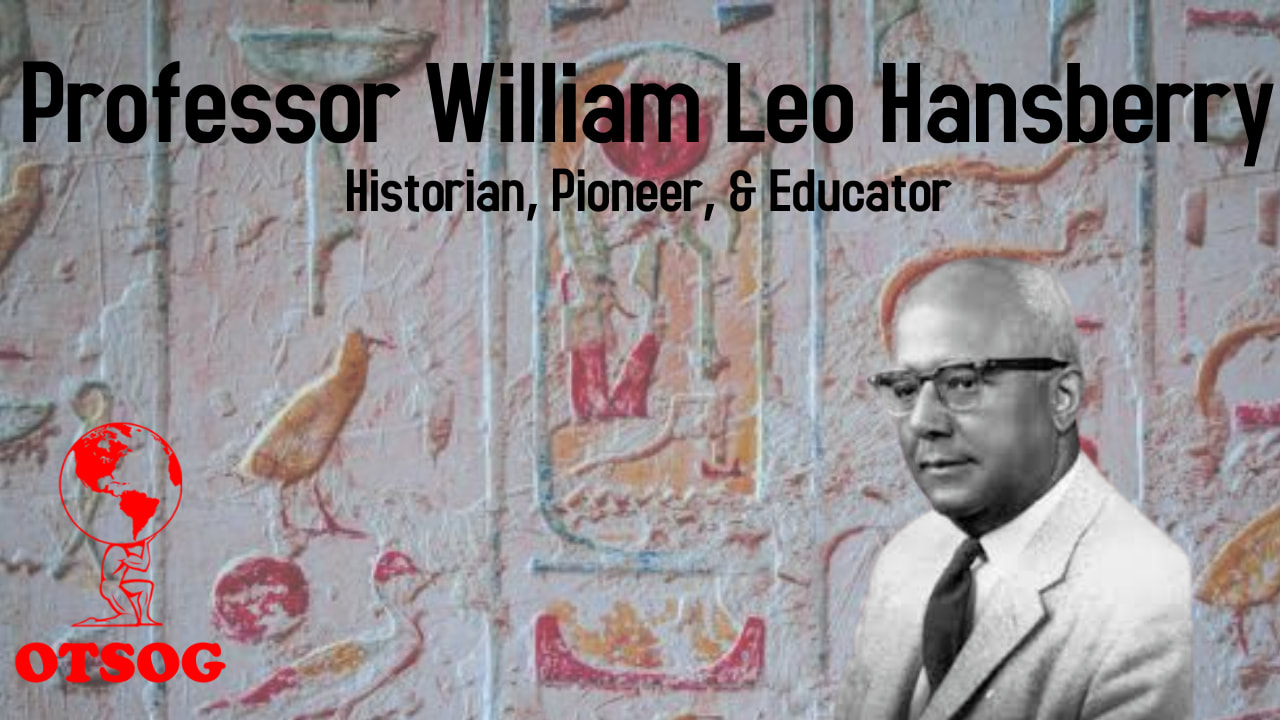
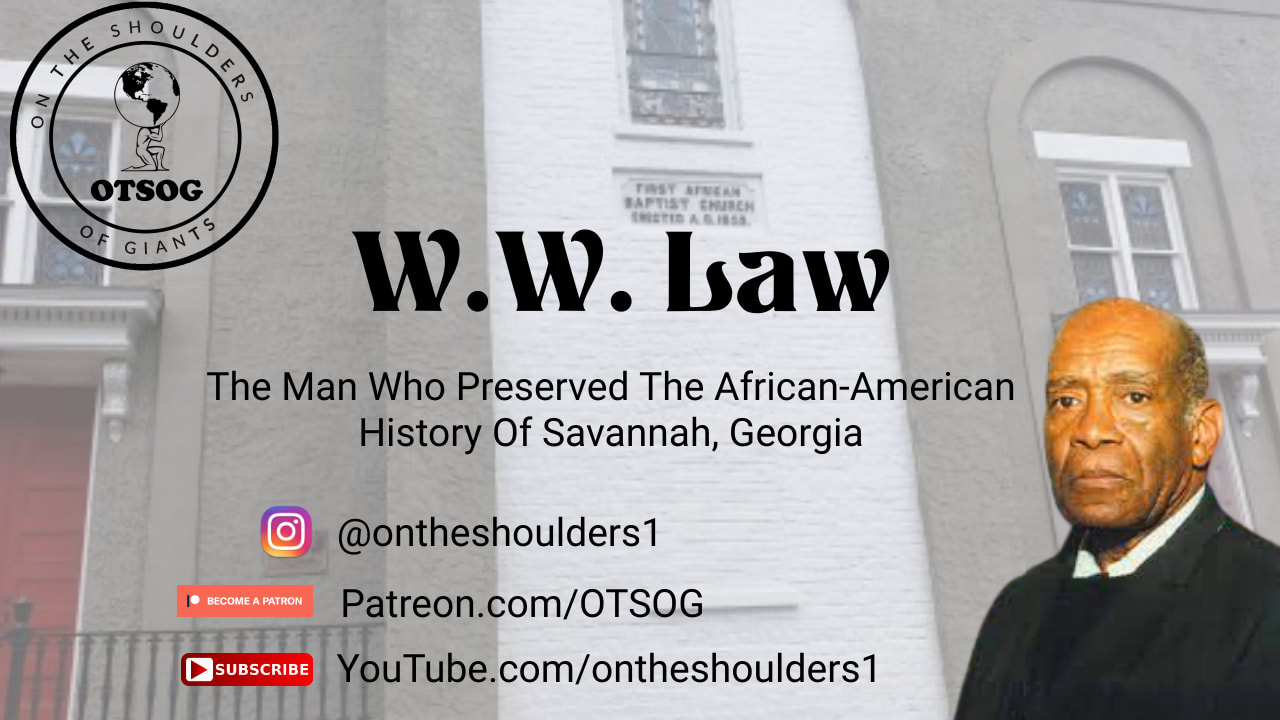
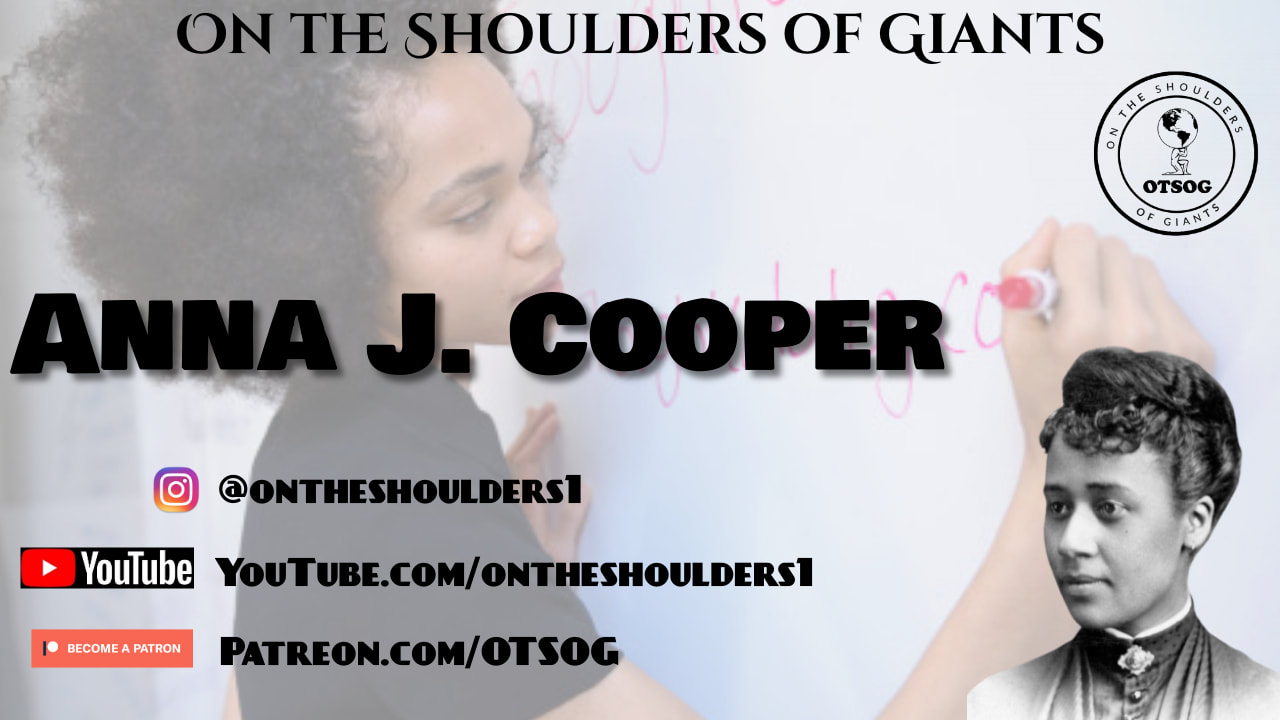
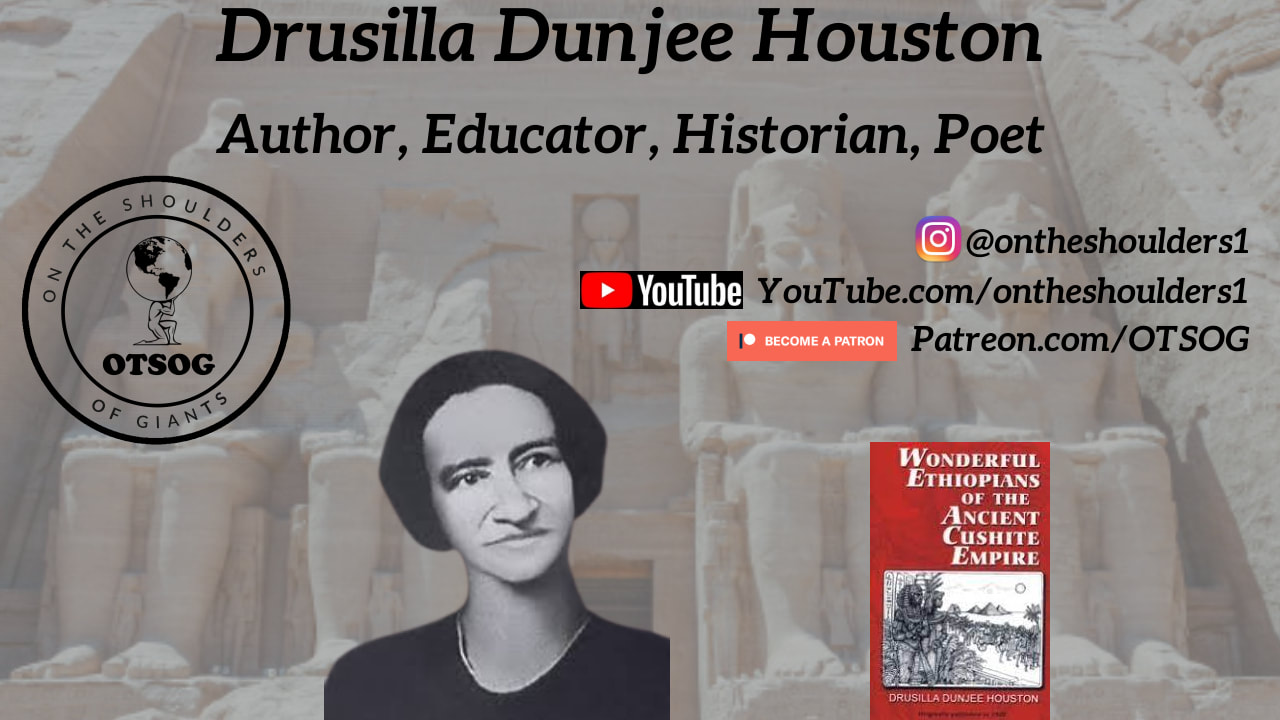
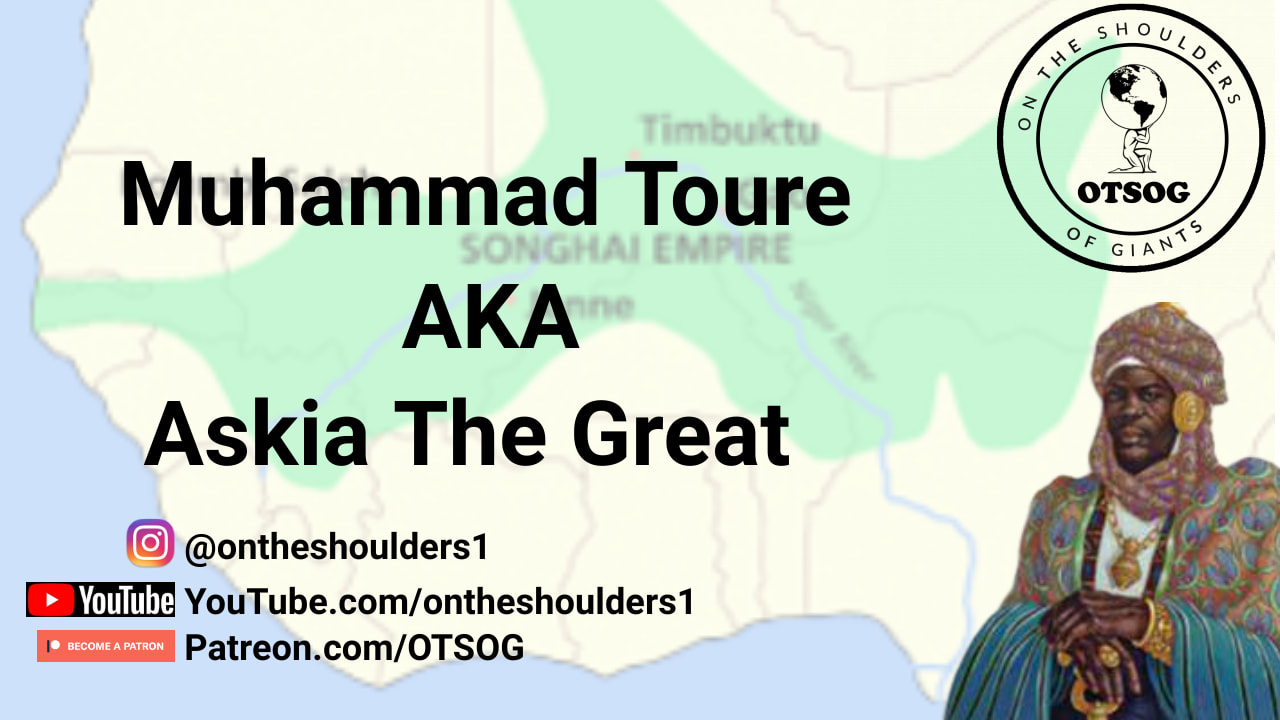
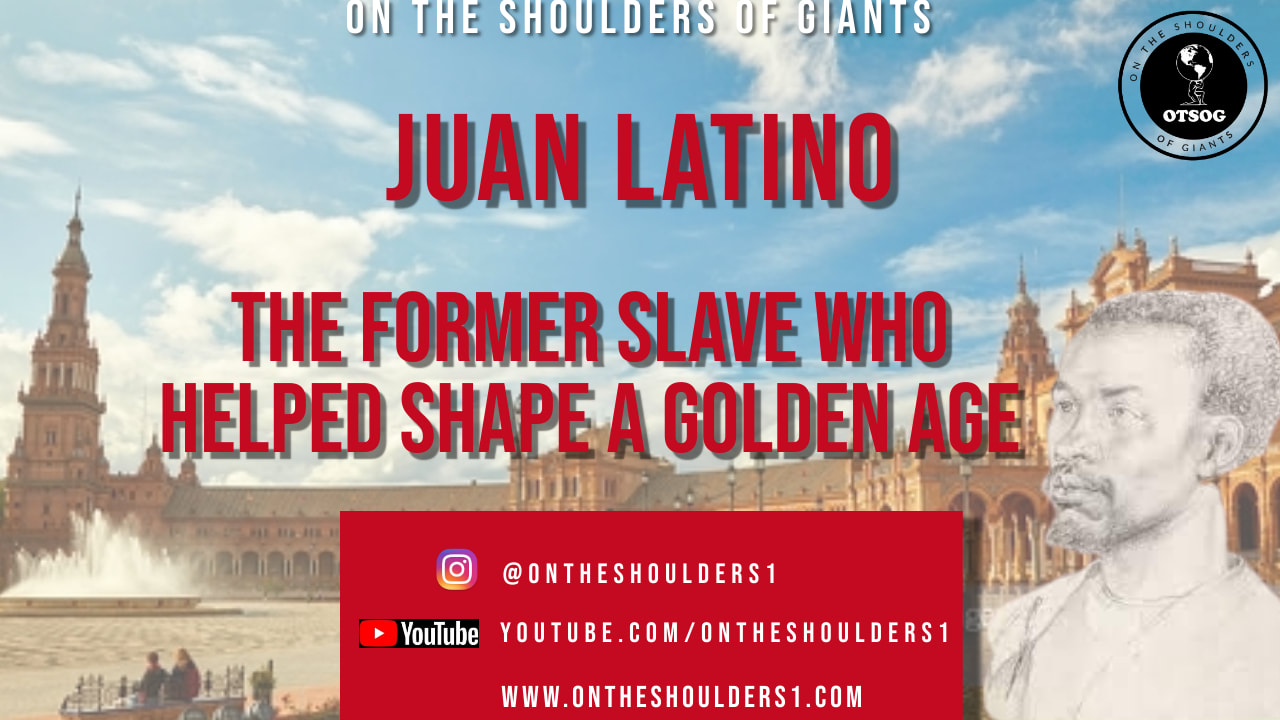
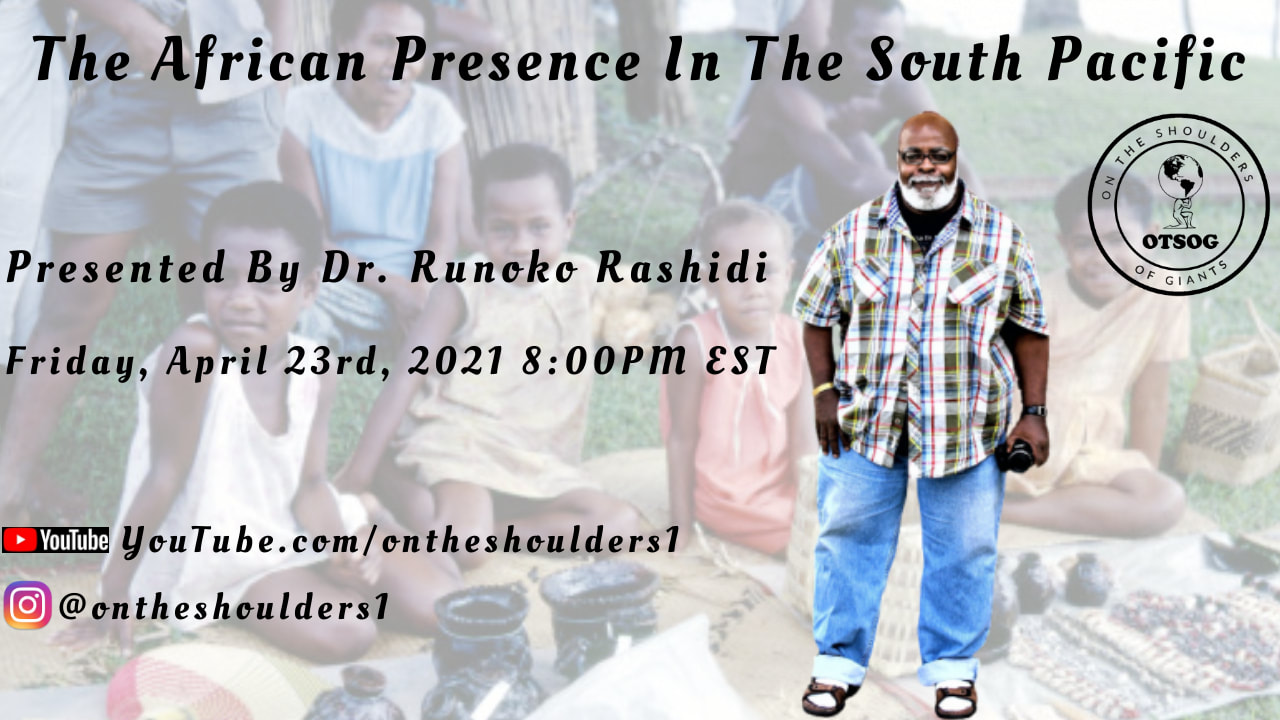
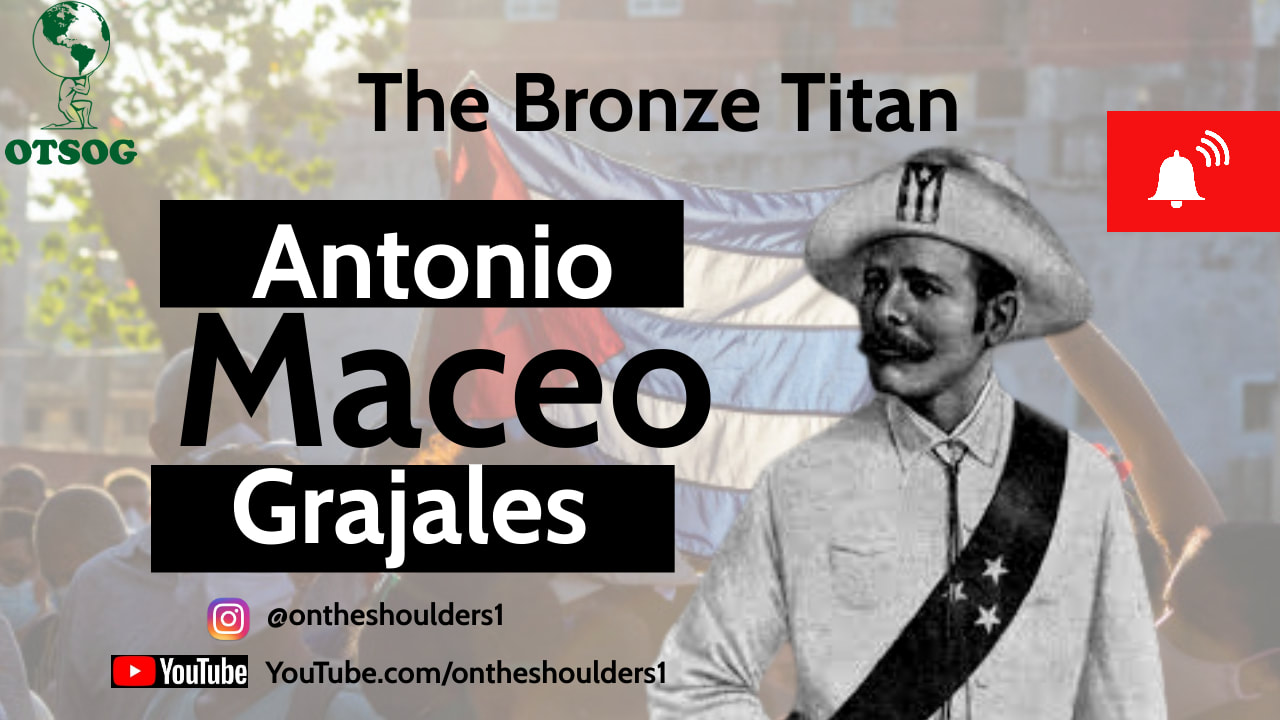
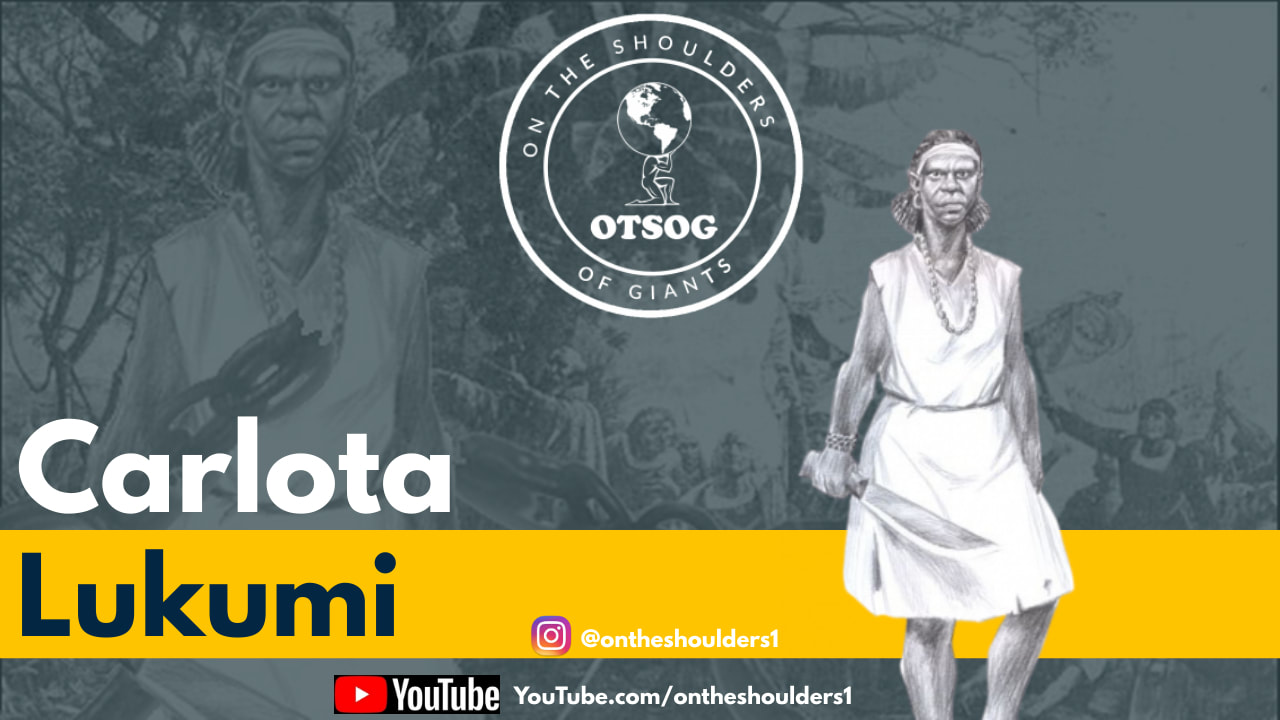
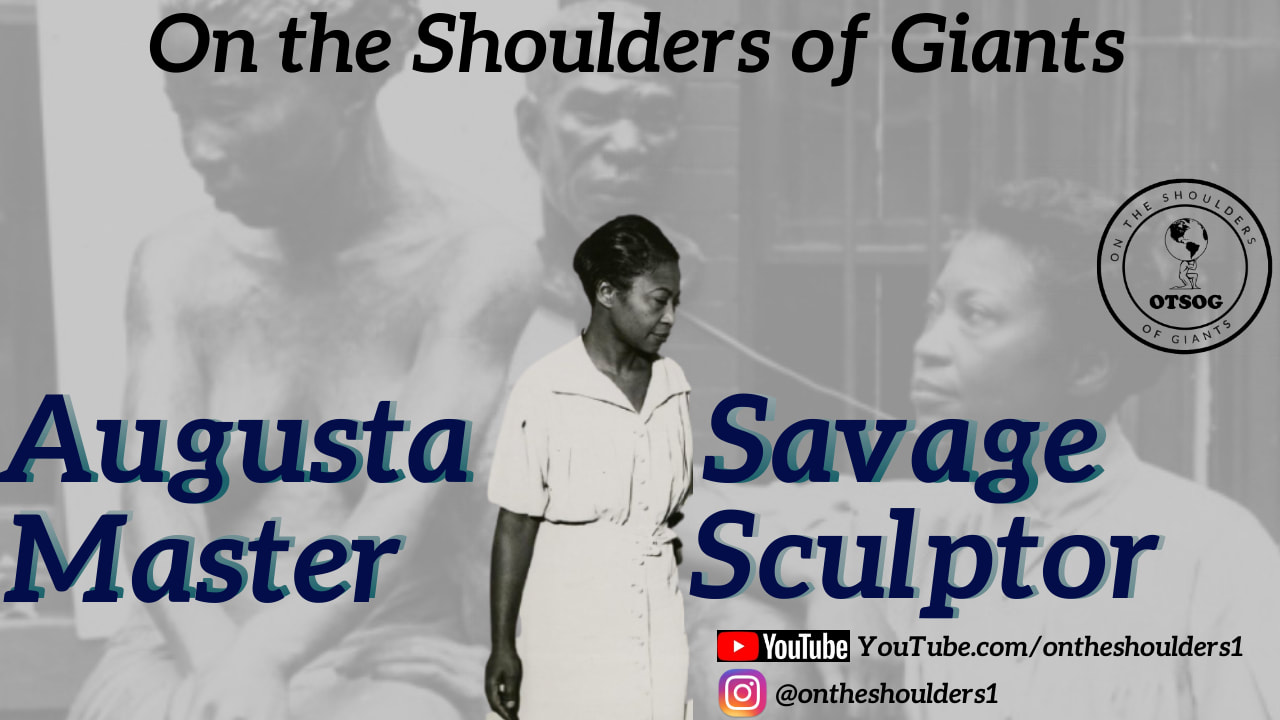
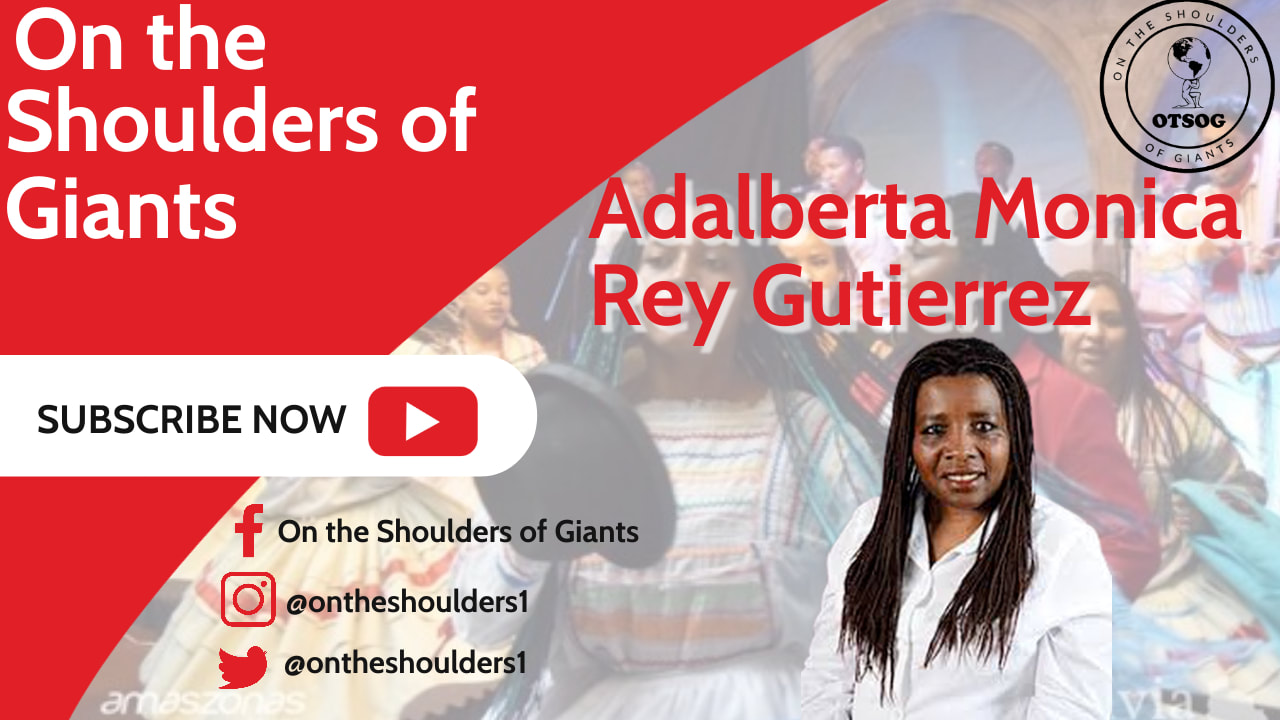
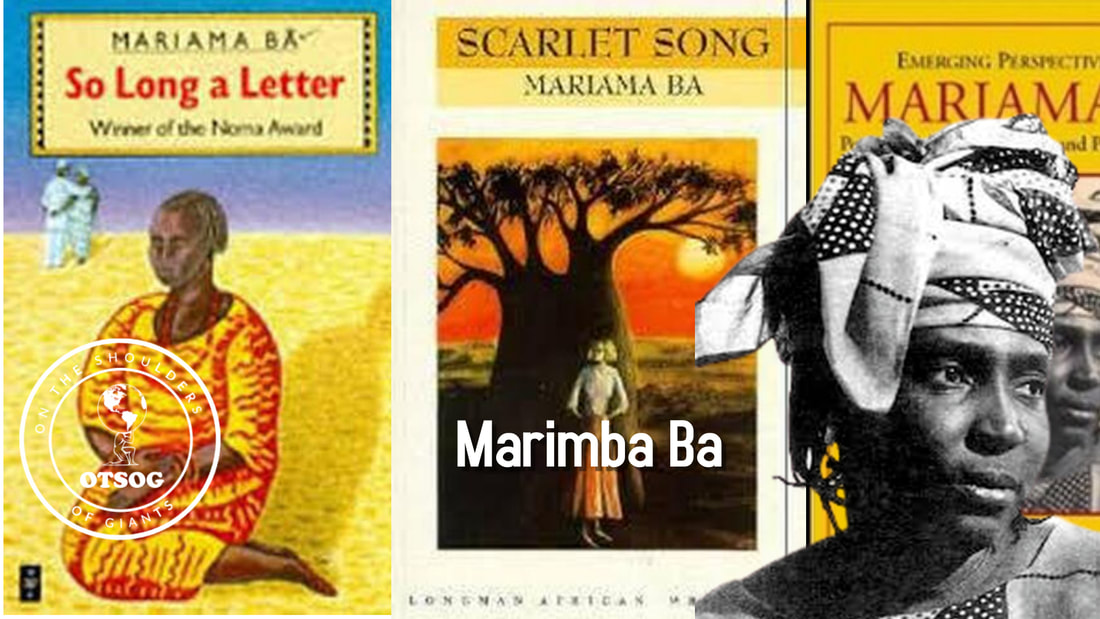
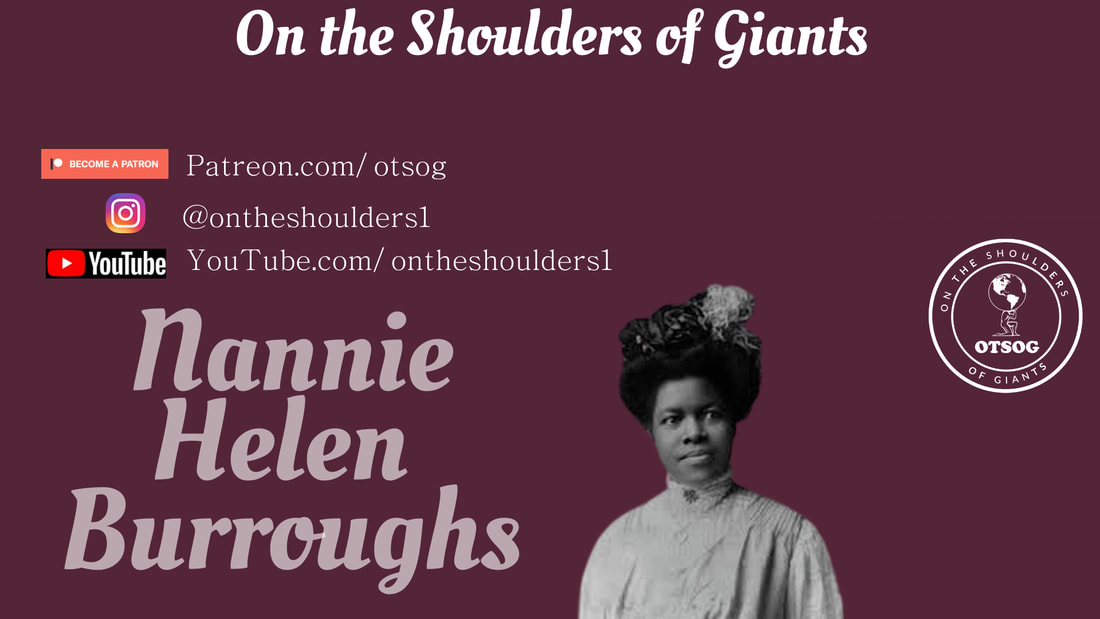
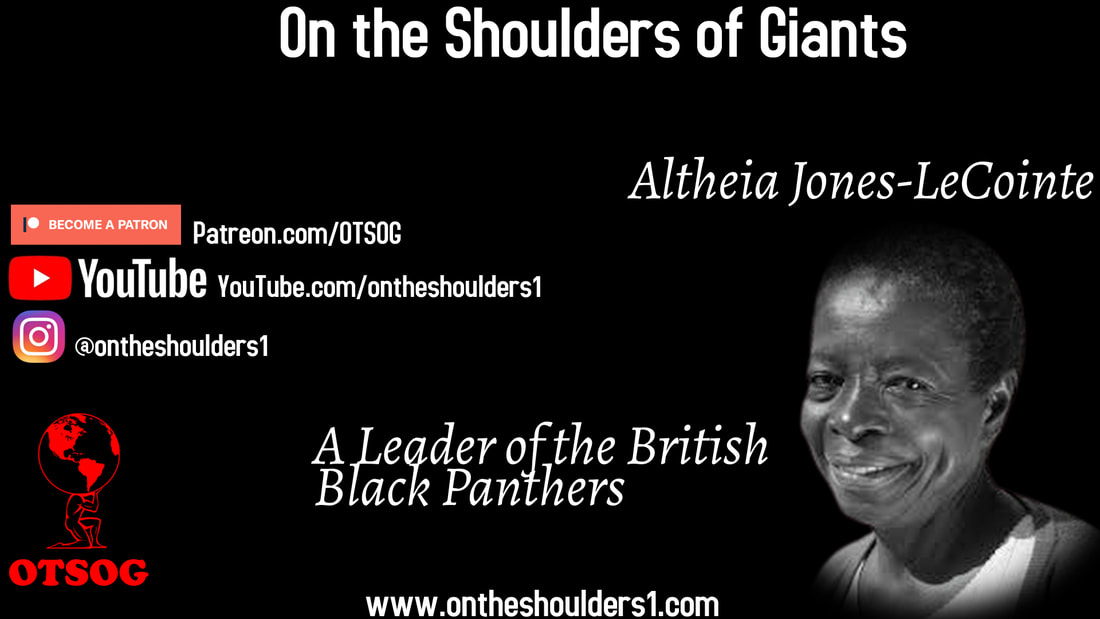
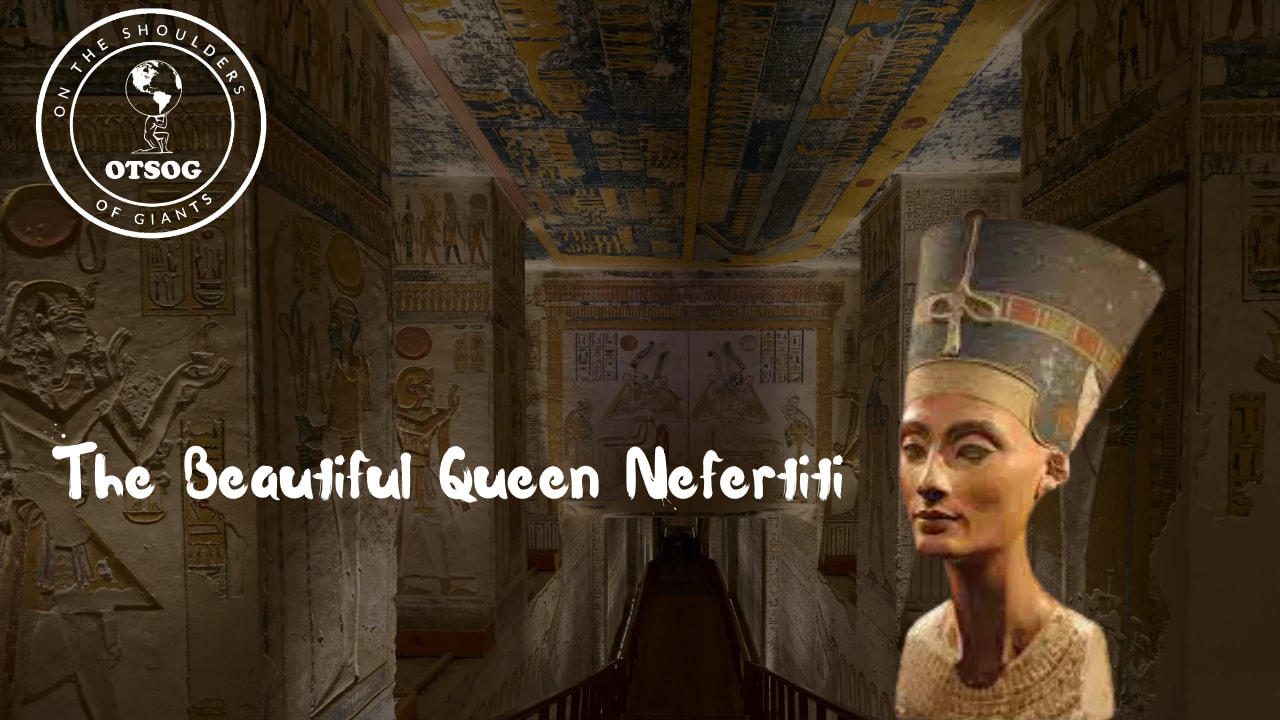
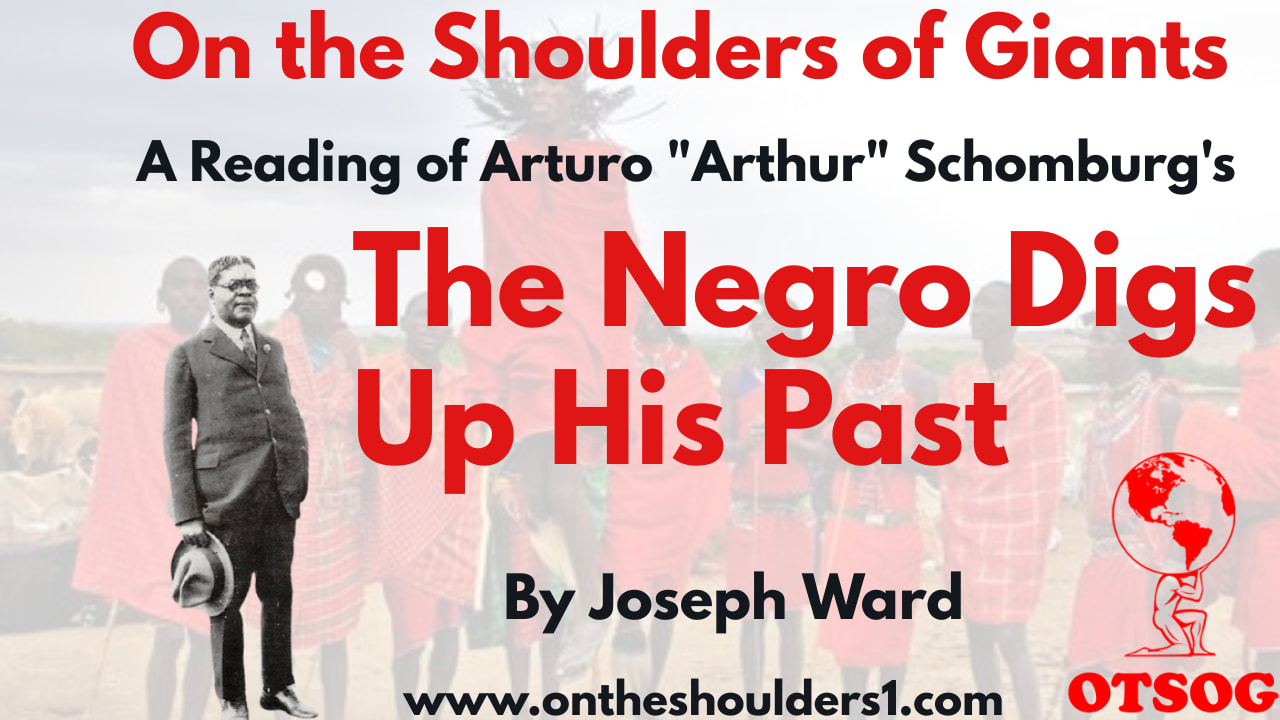
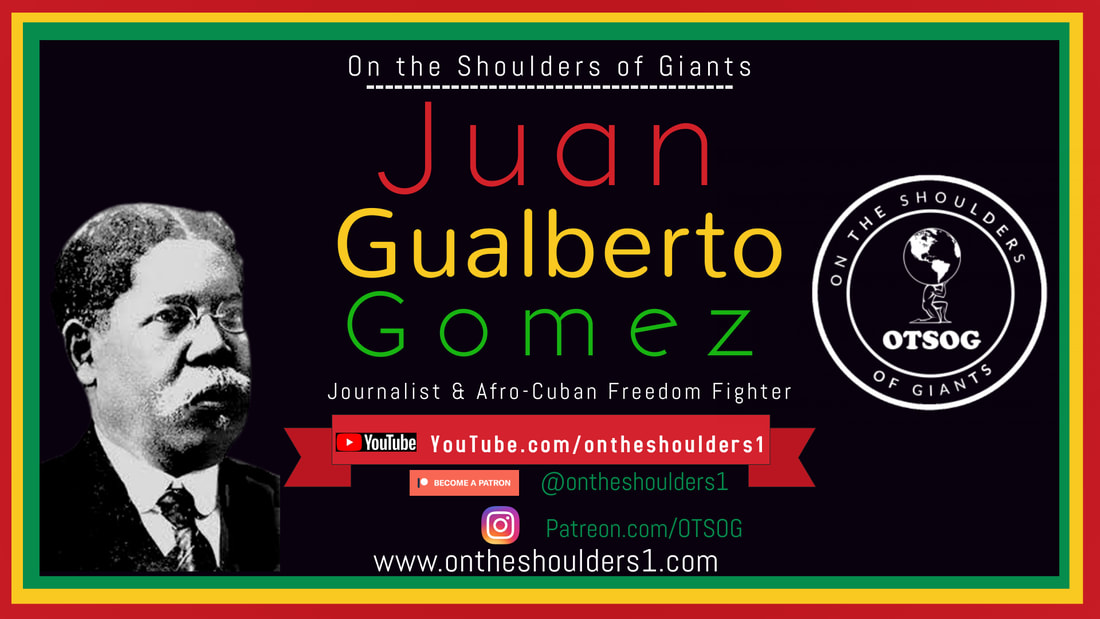

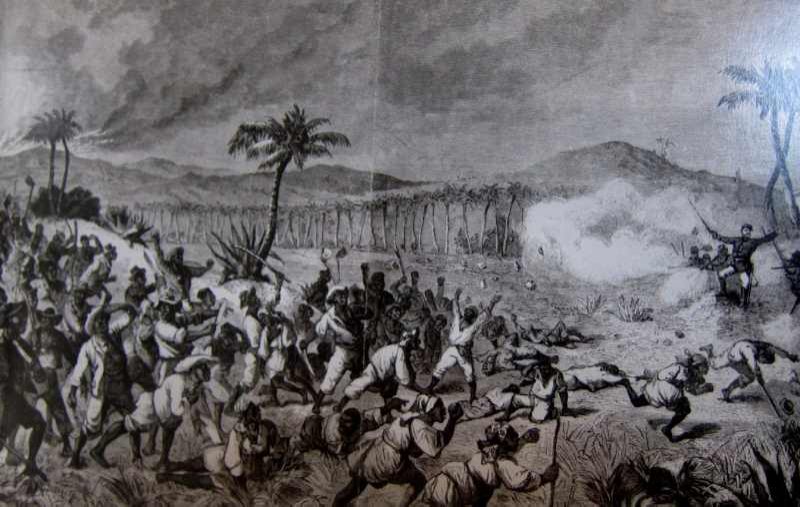
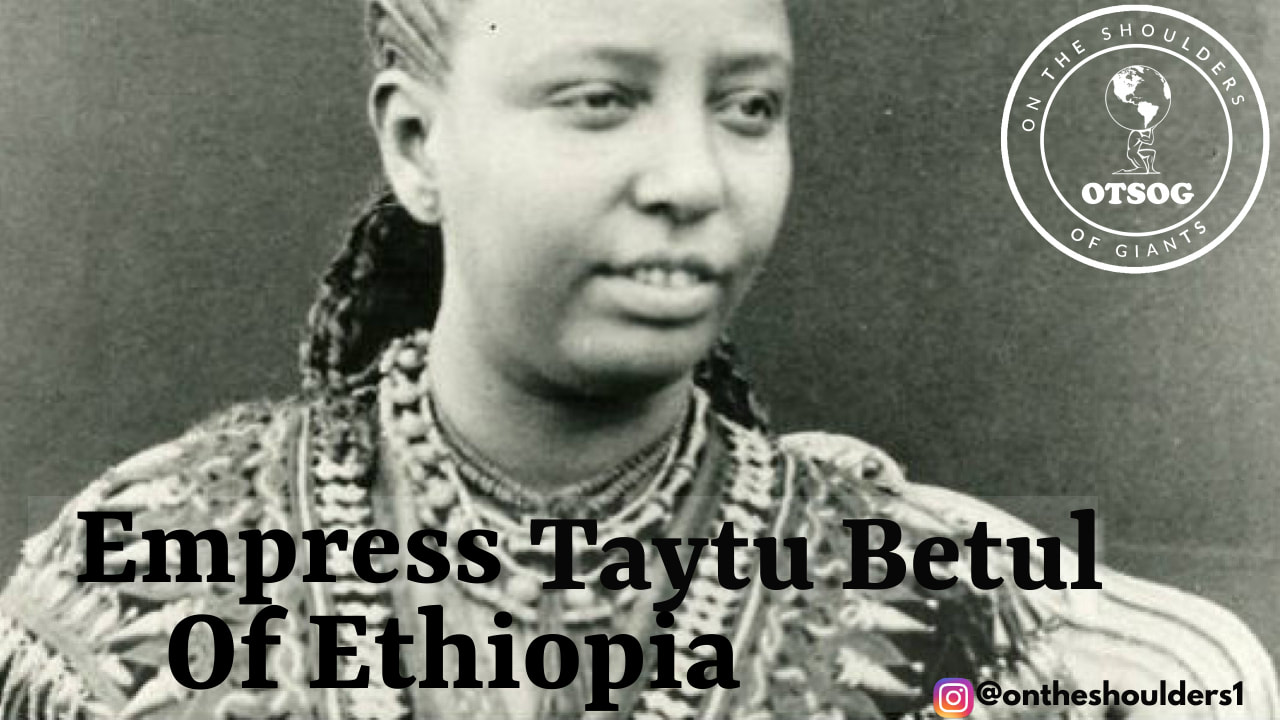
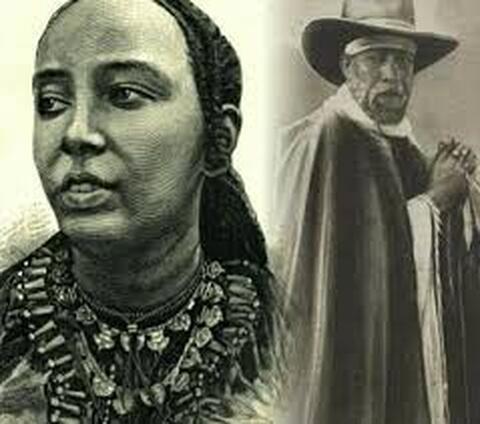
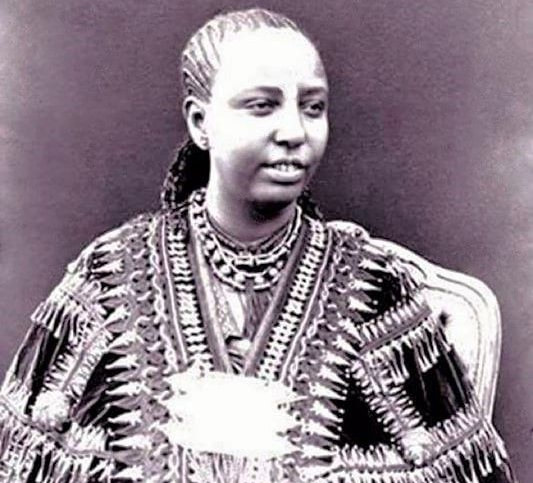
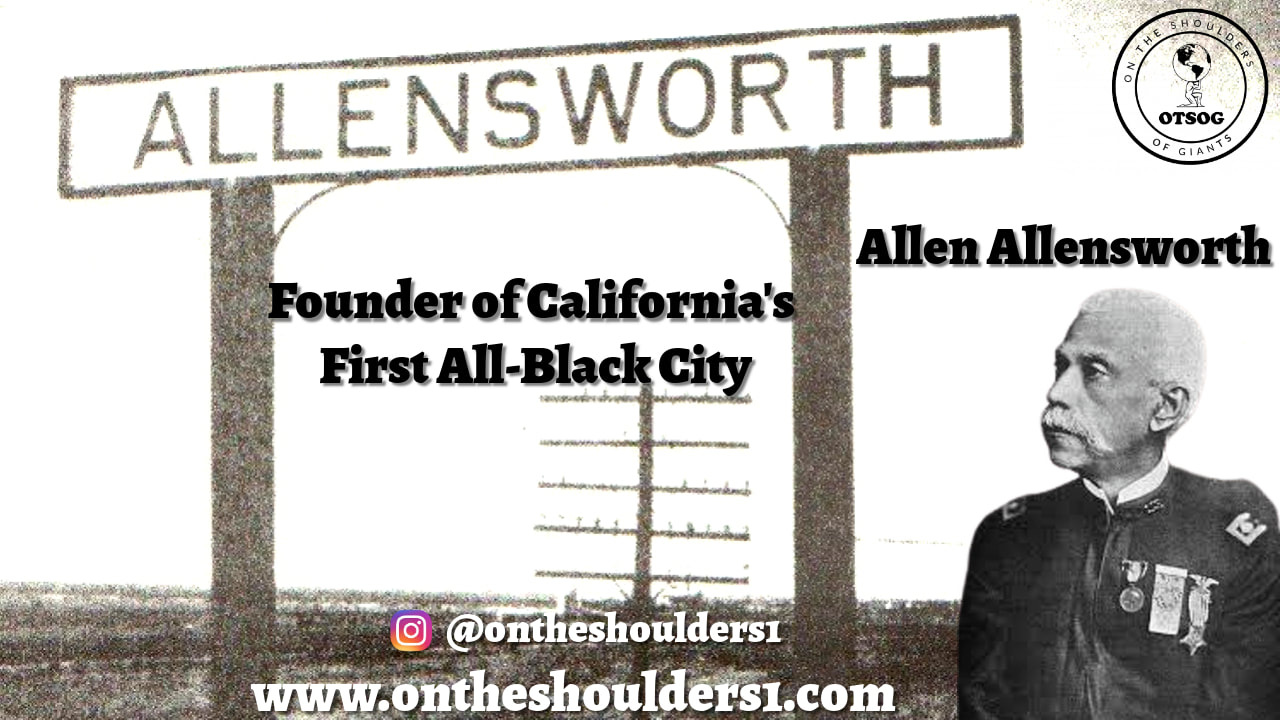
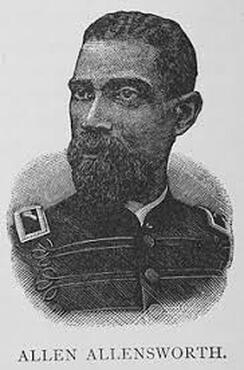
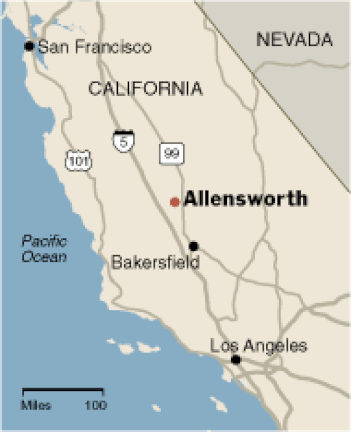
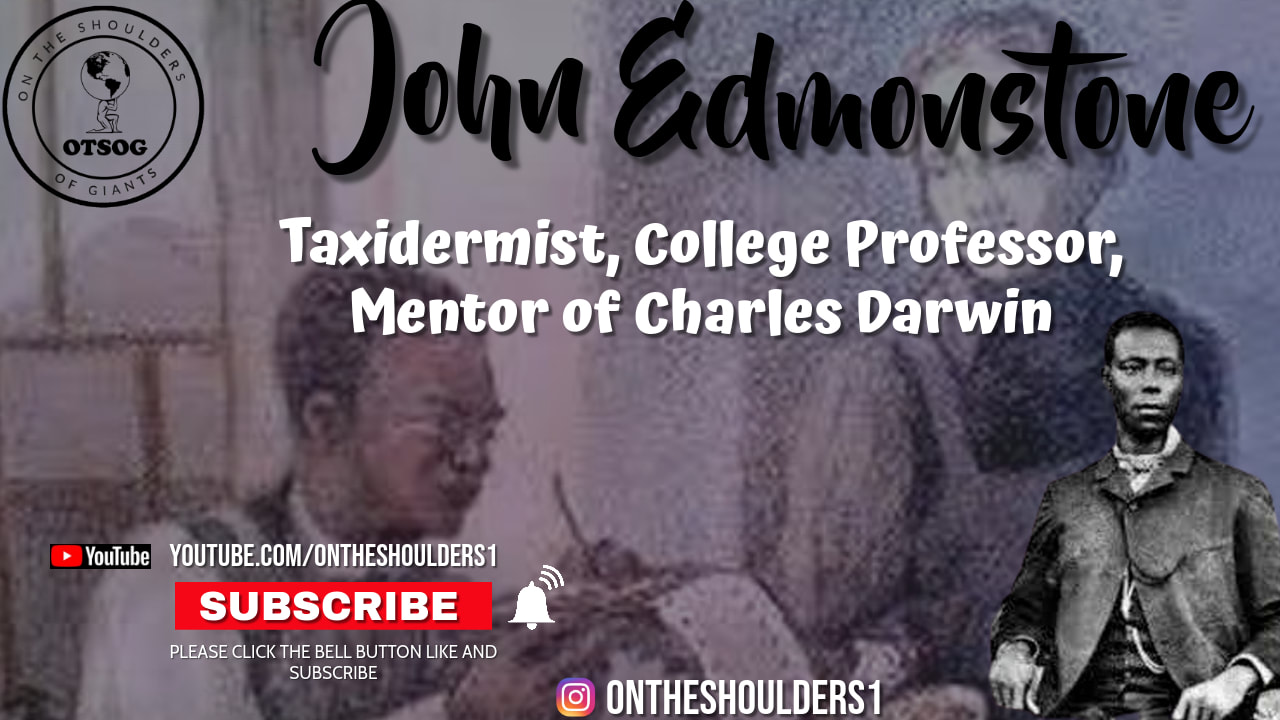
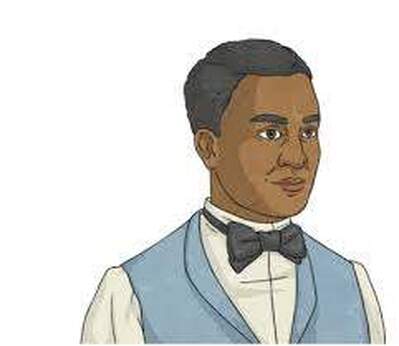

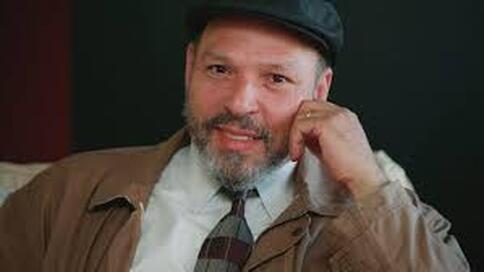
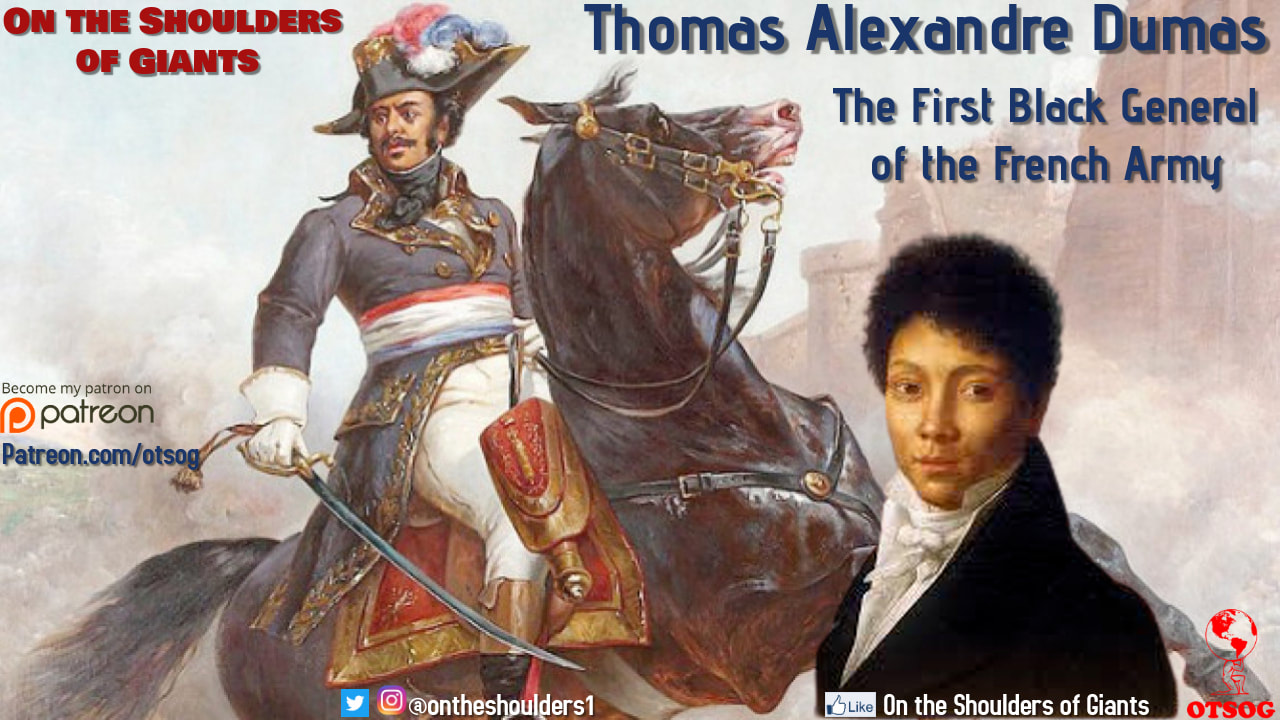
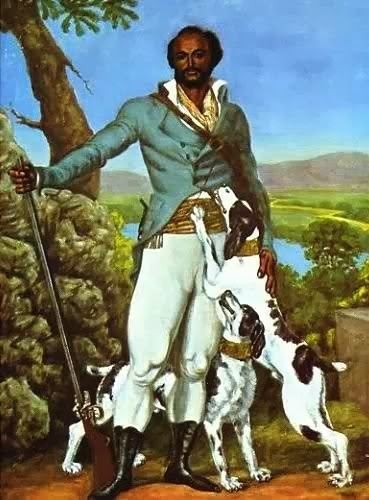
 RSS Feed
RSS Feed
